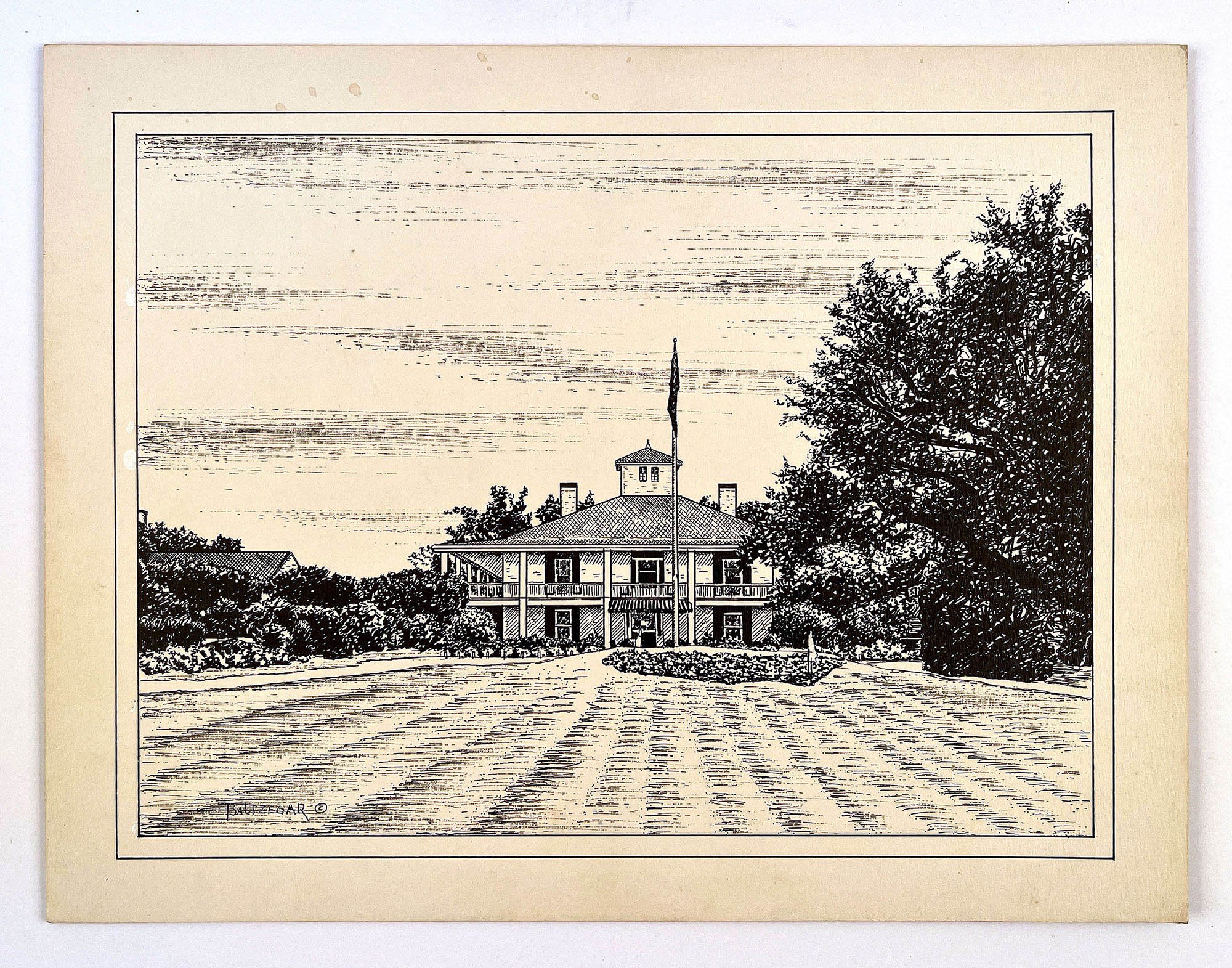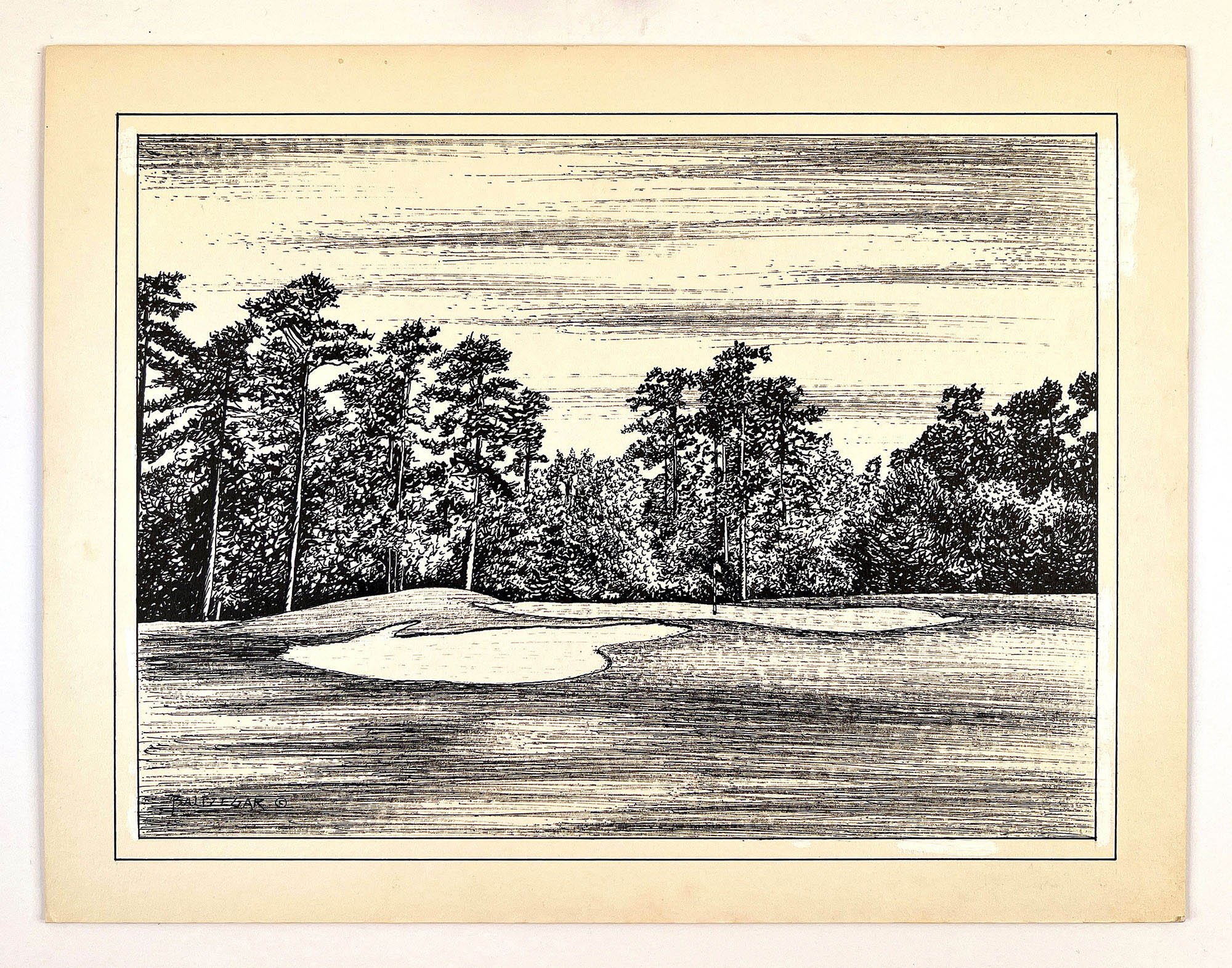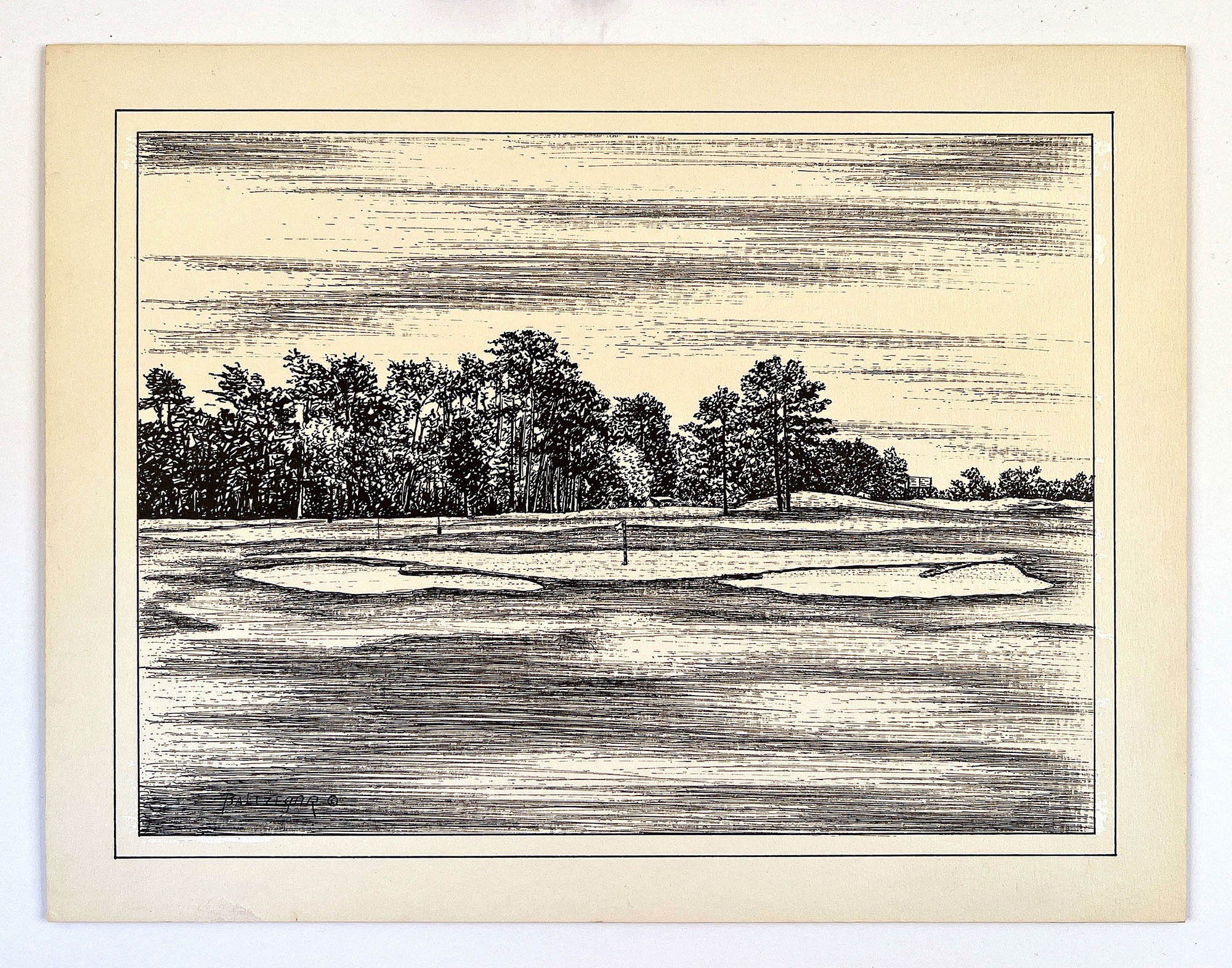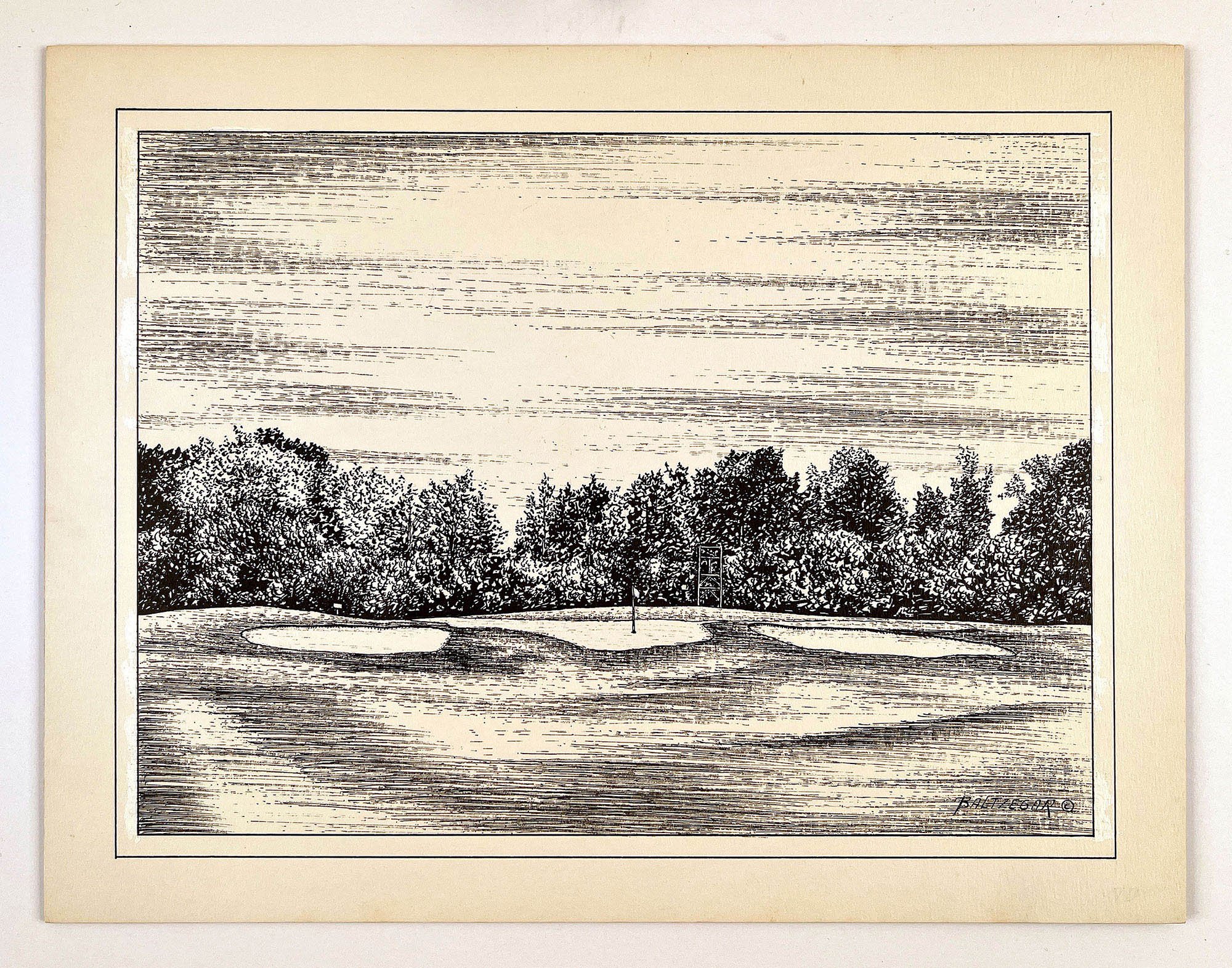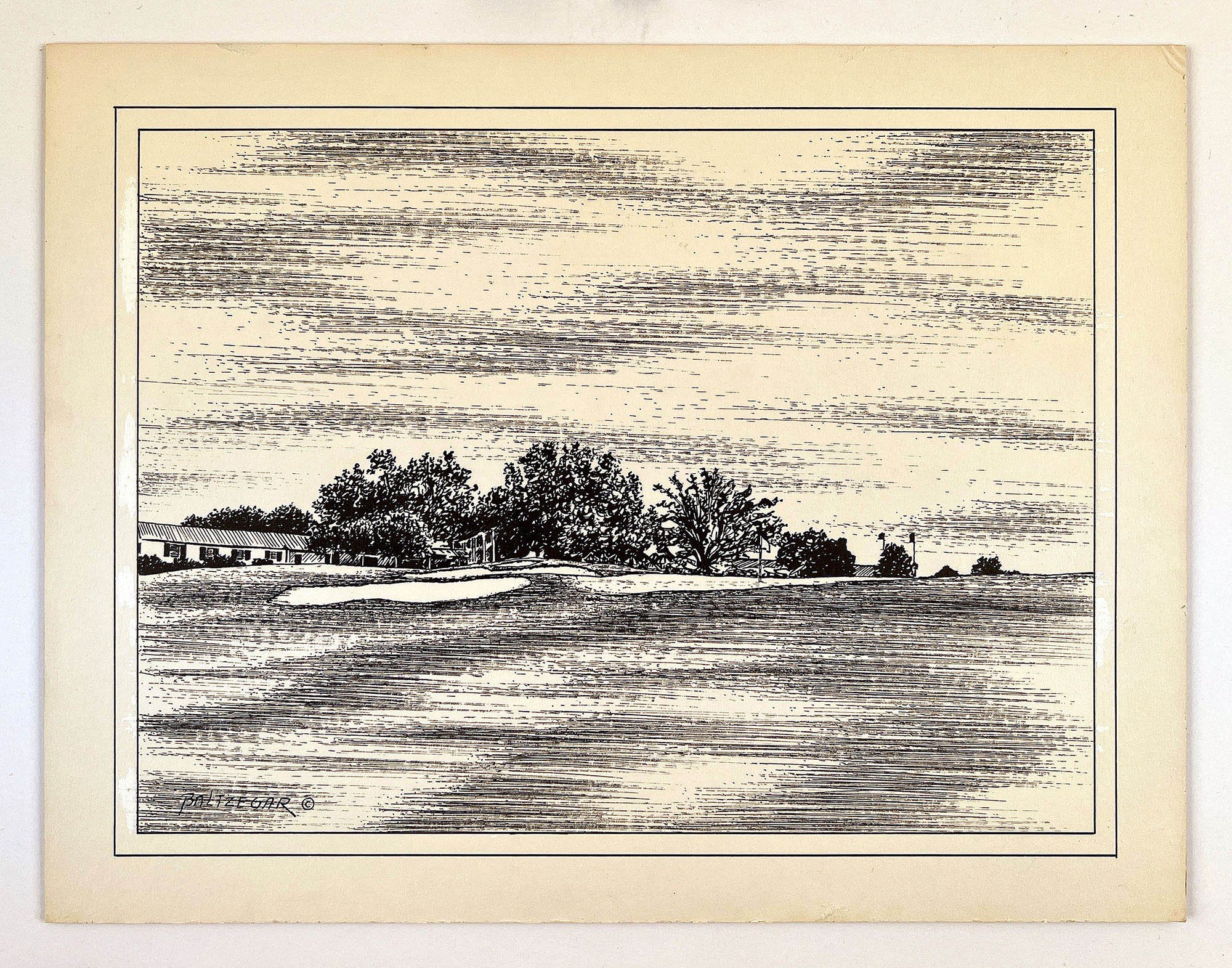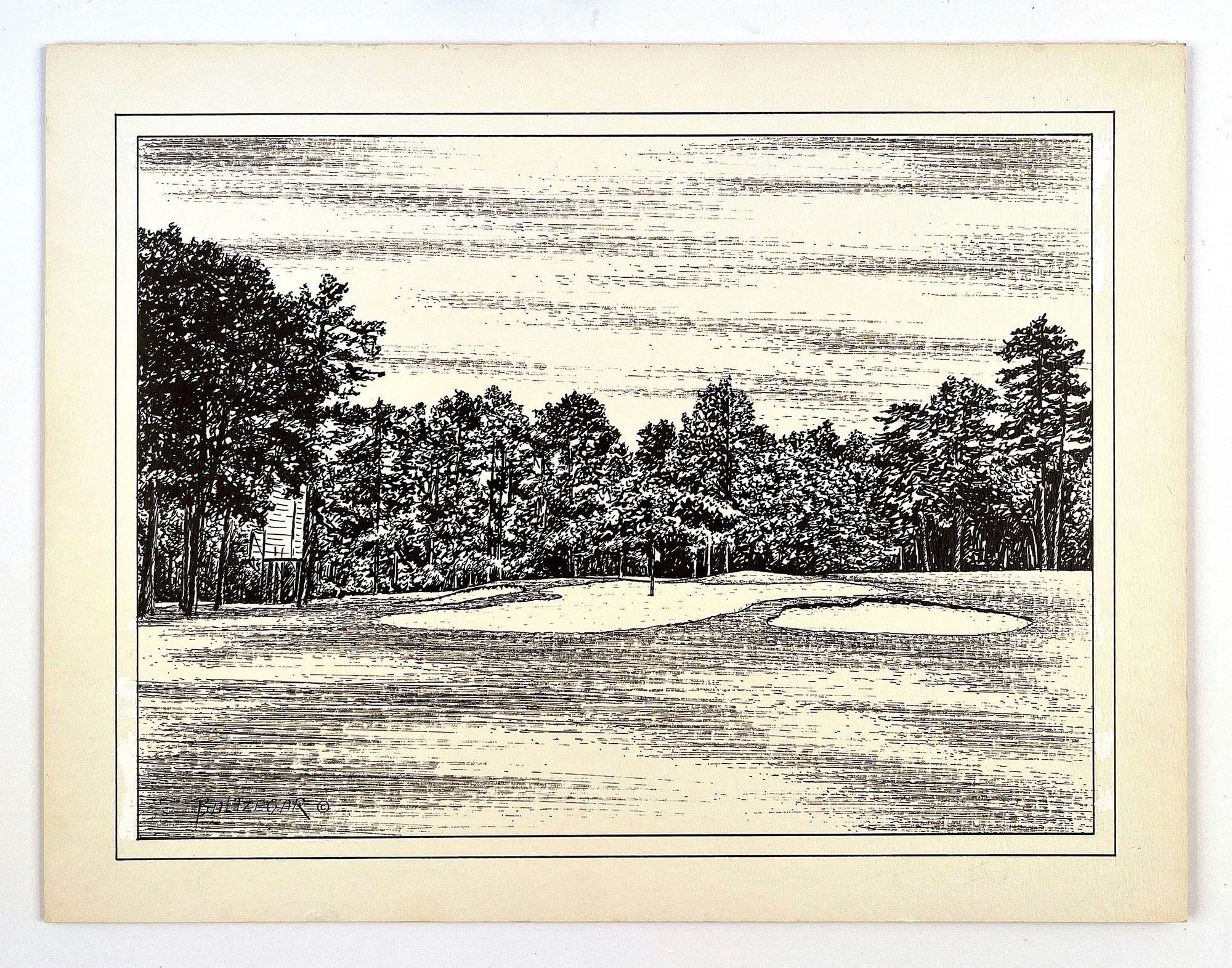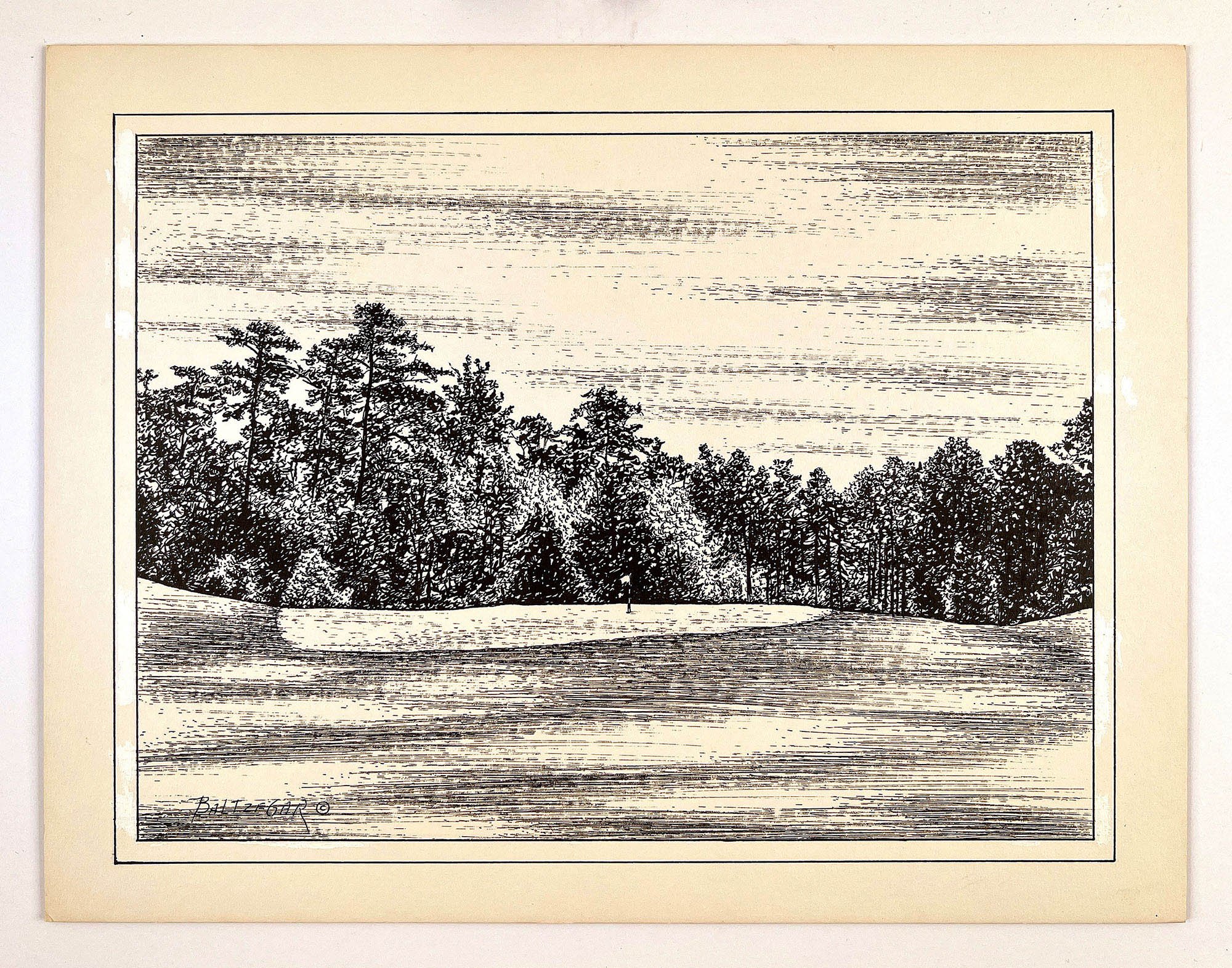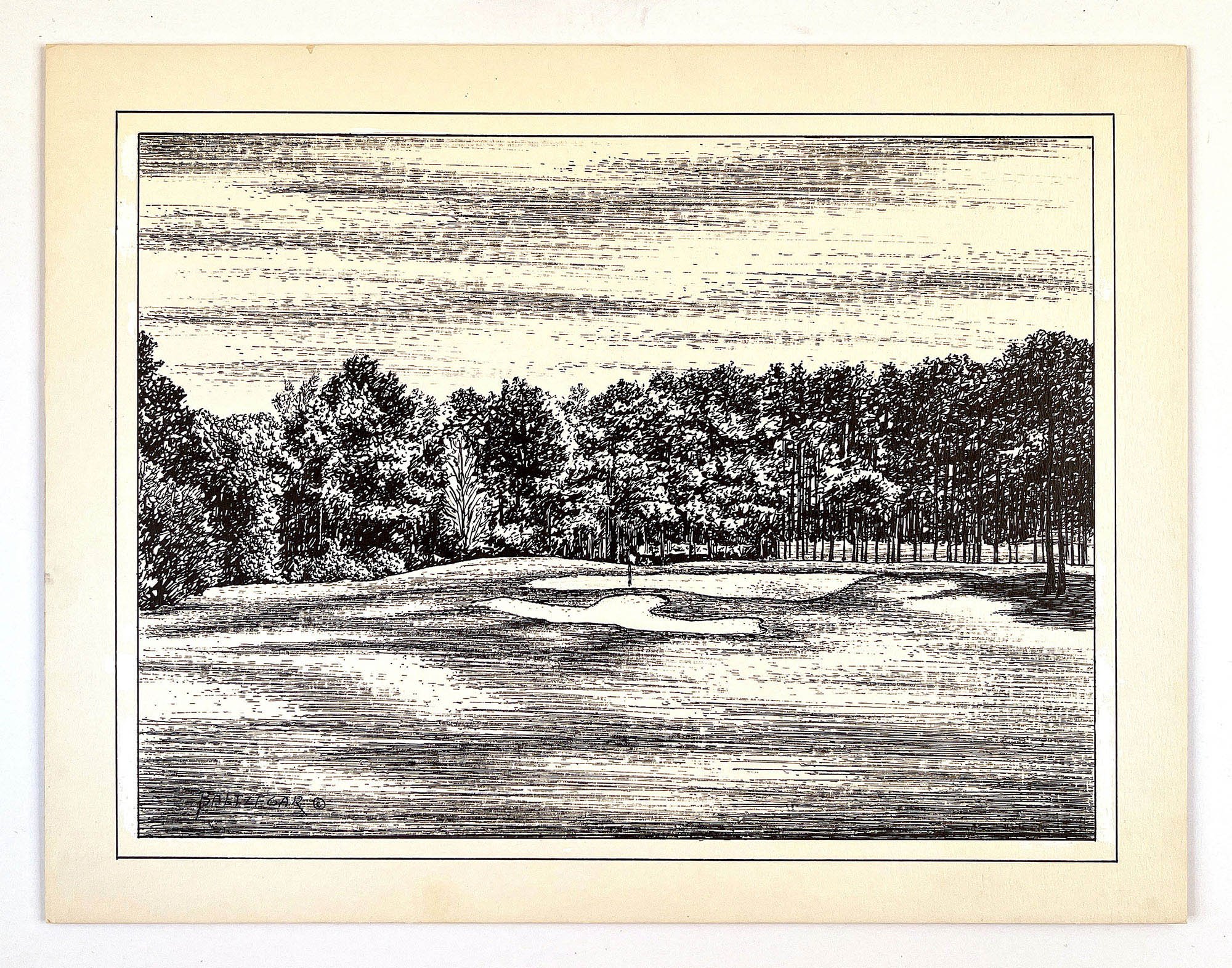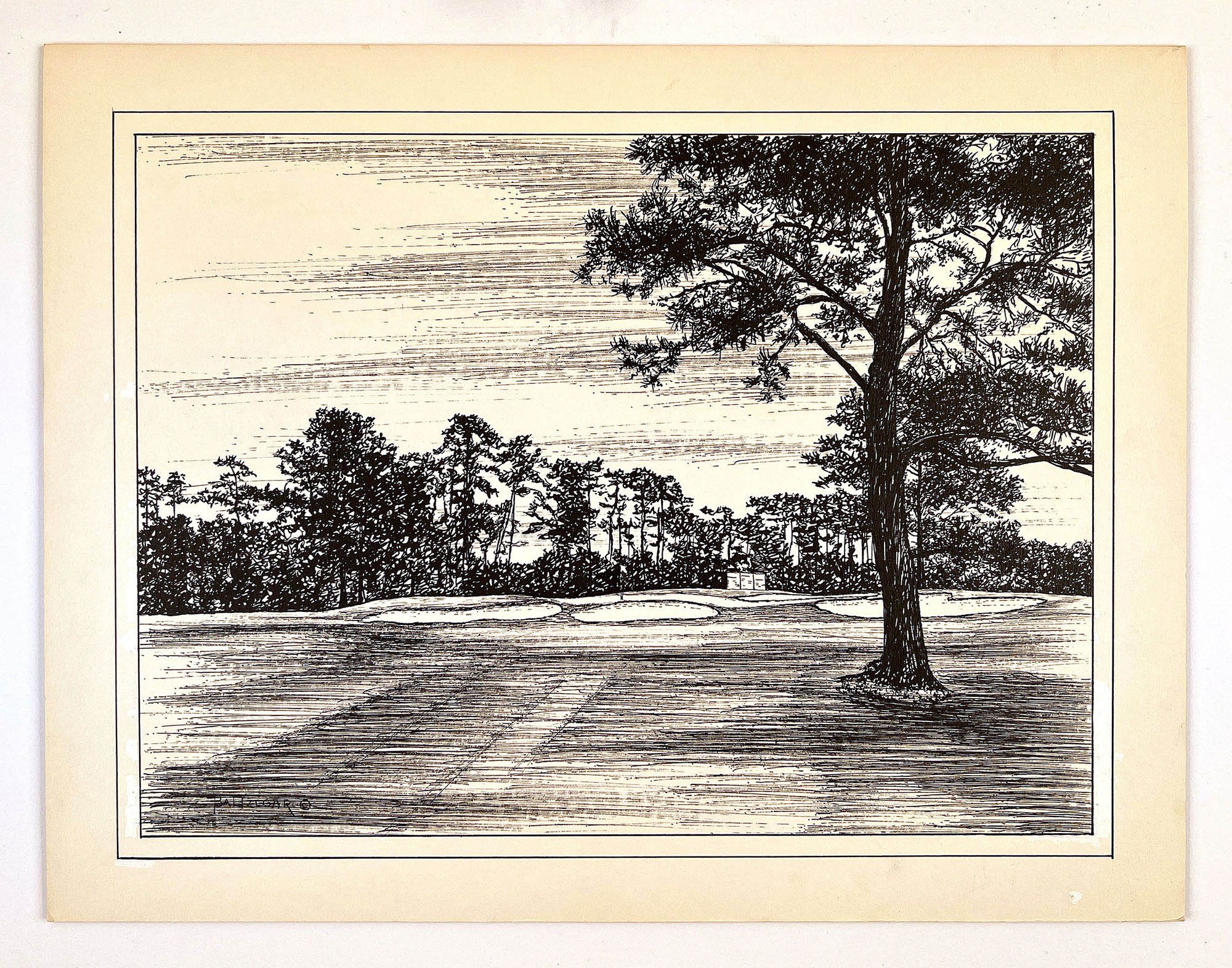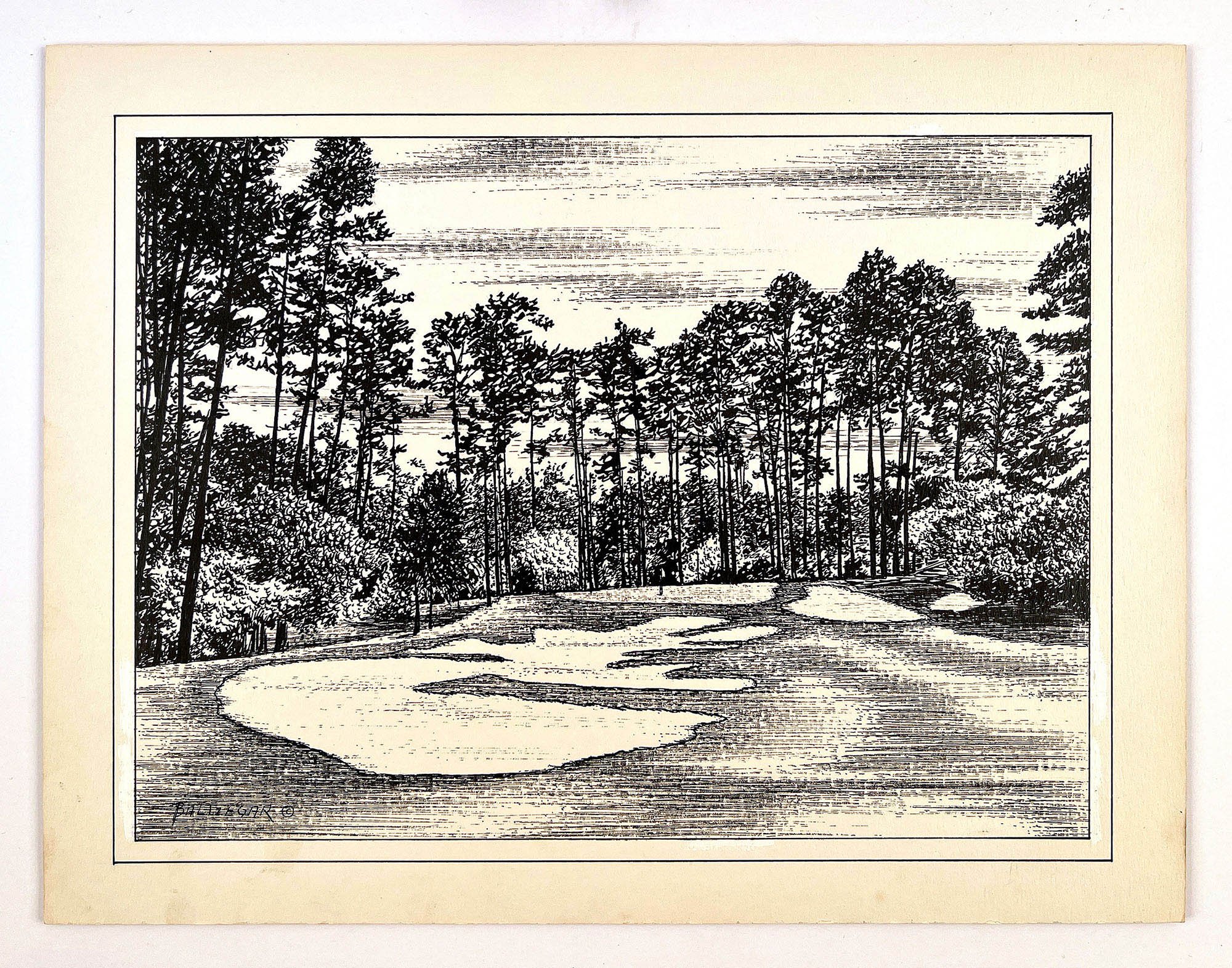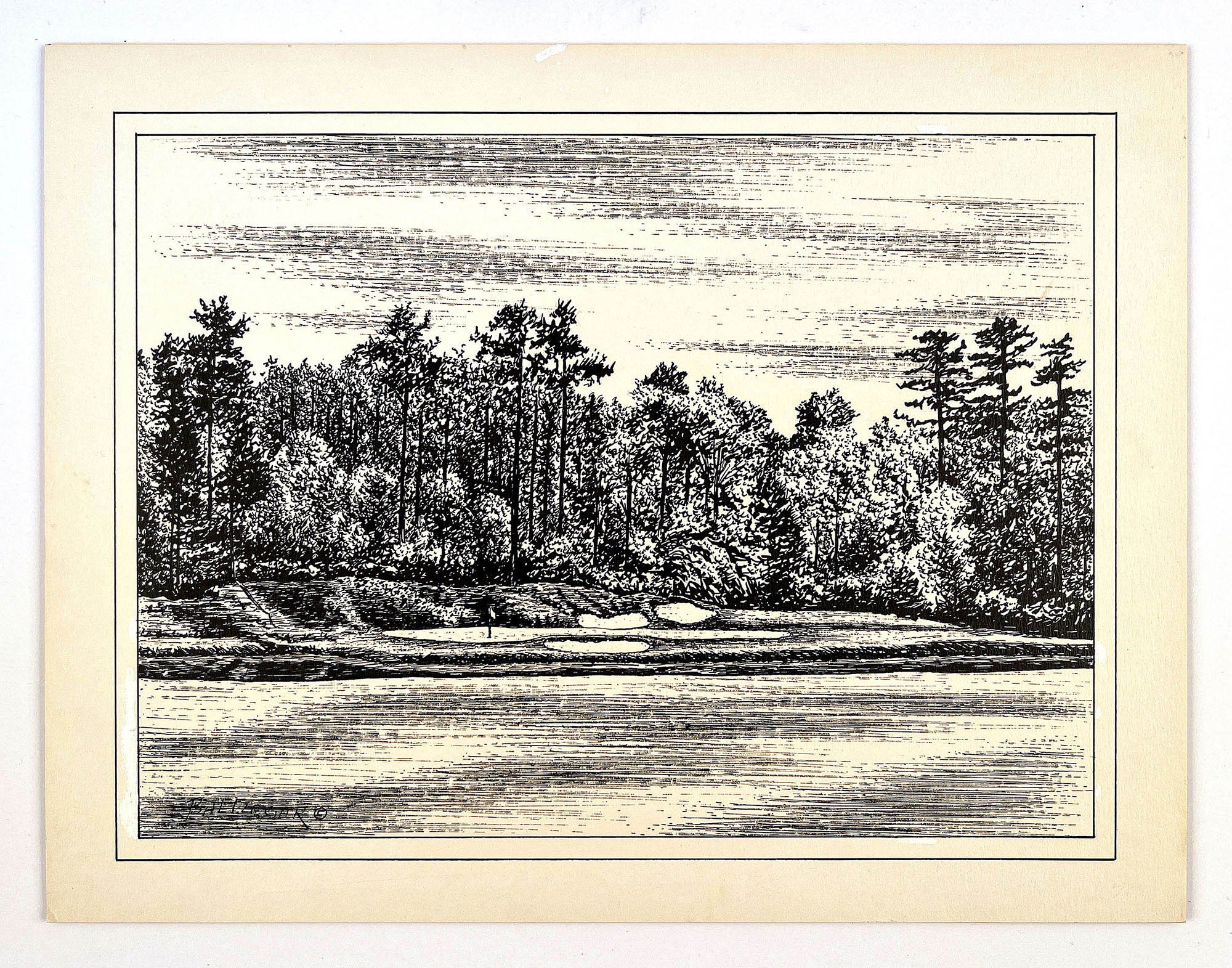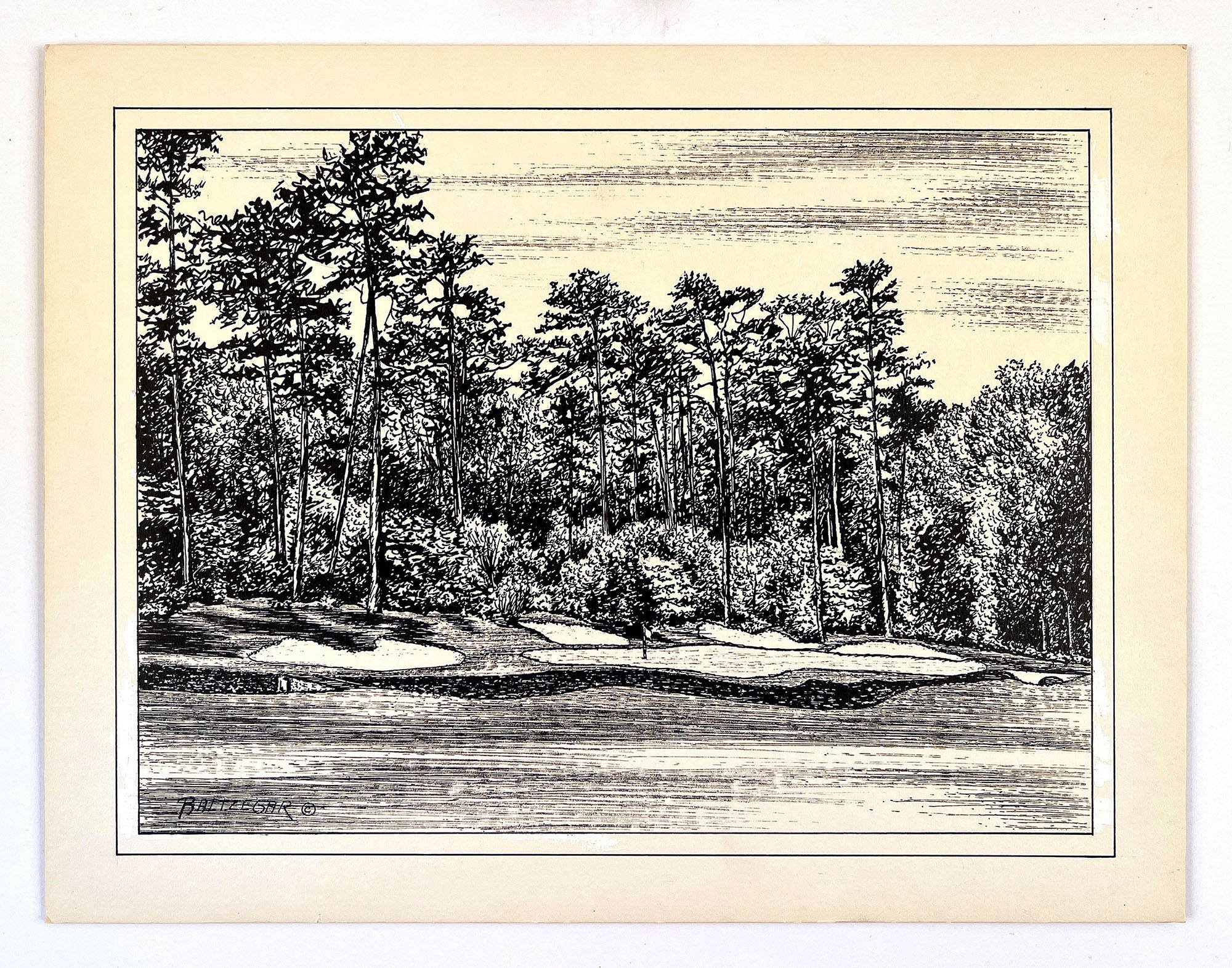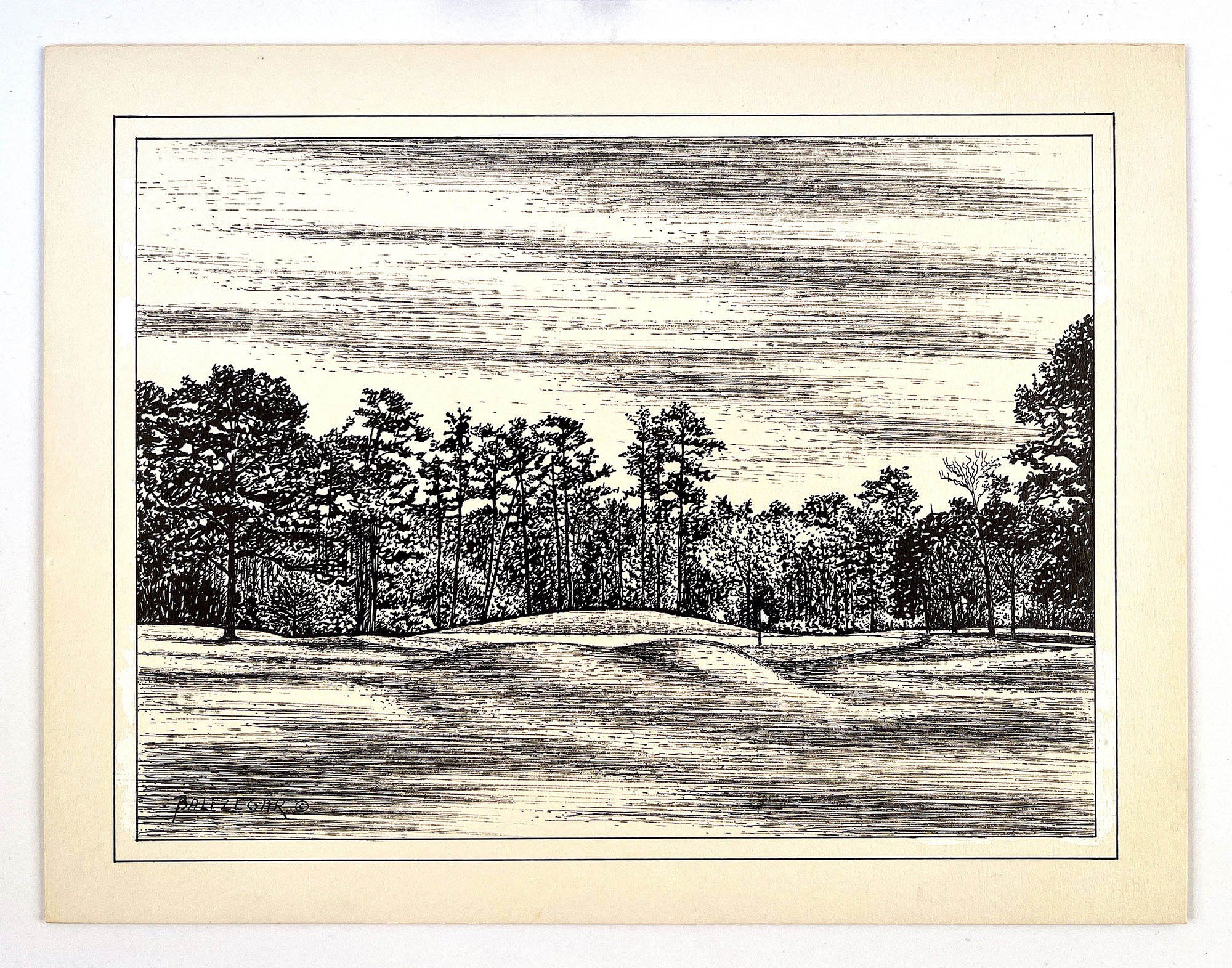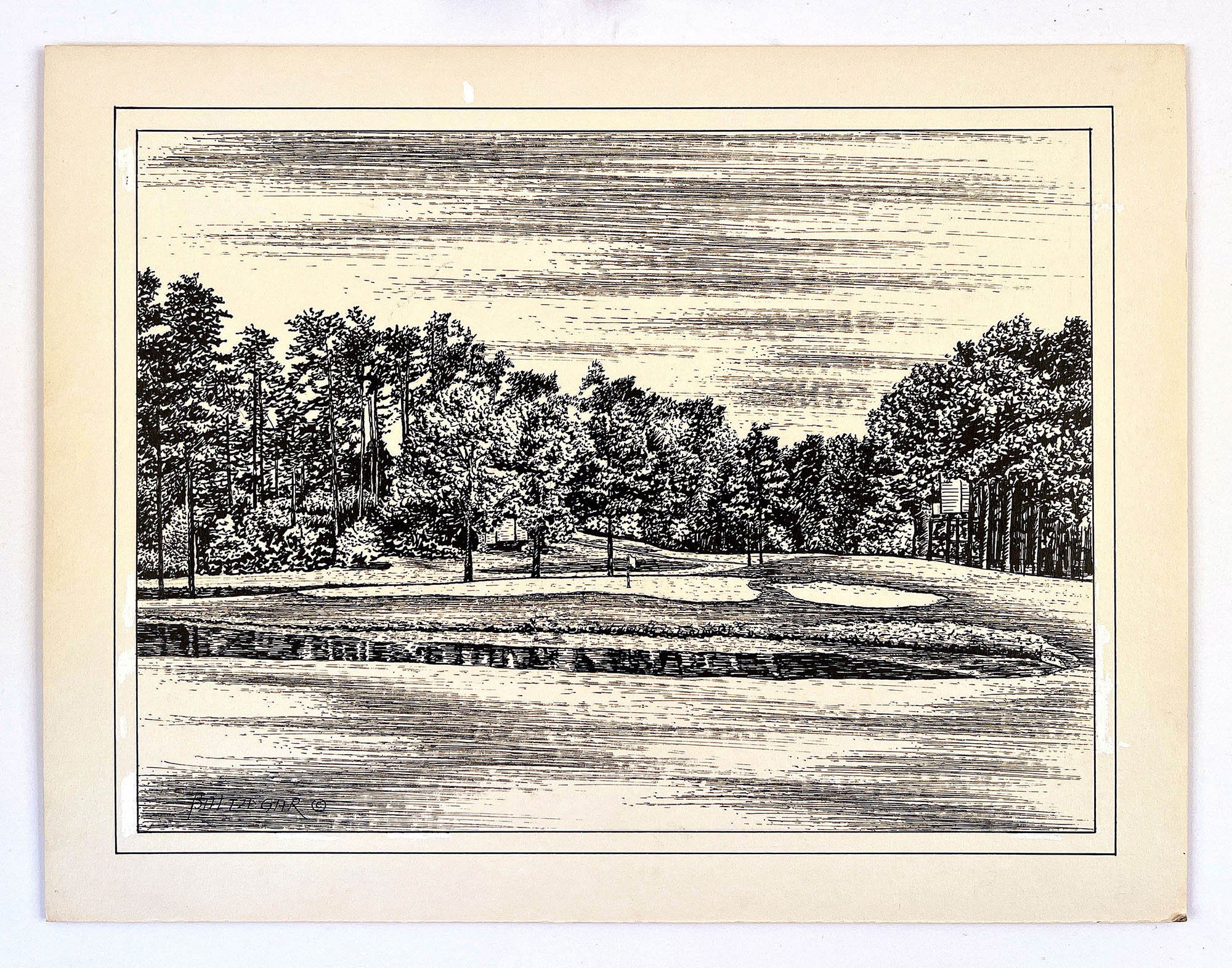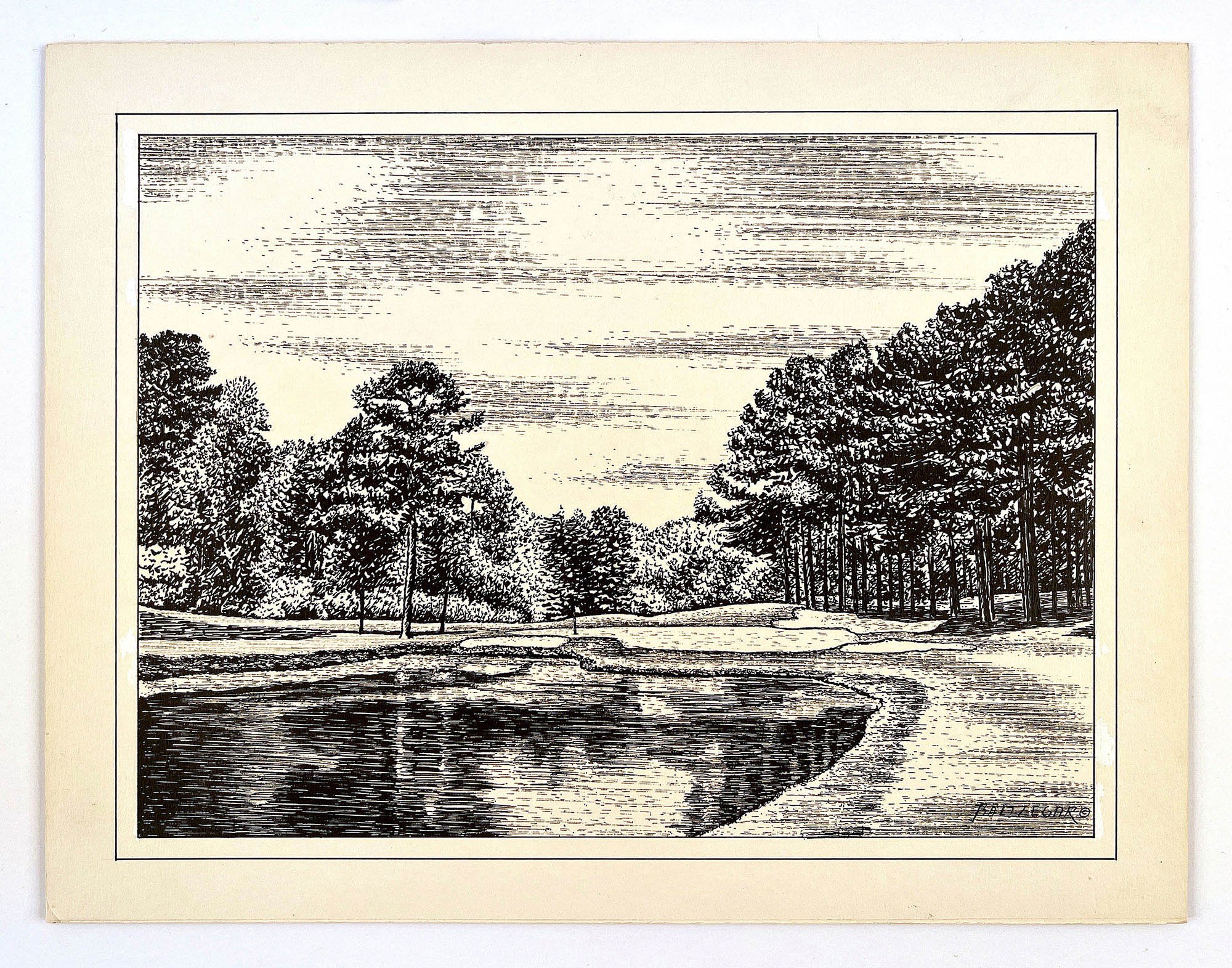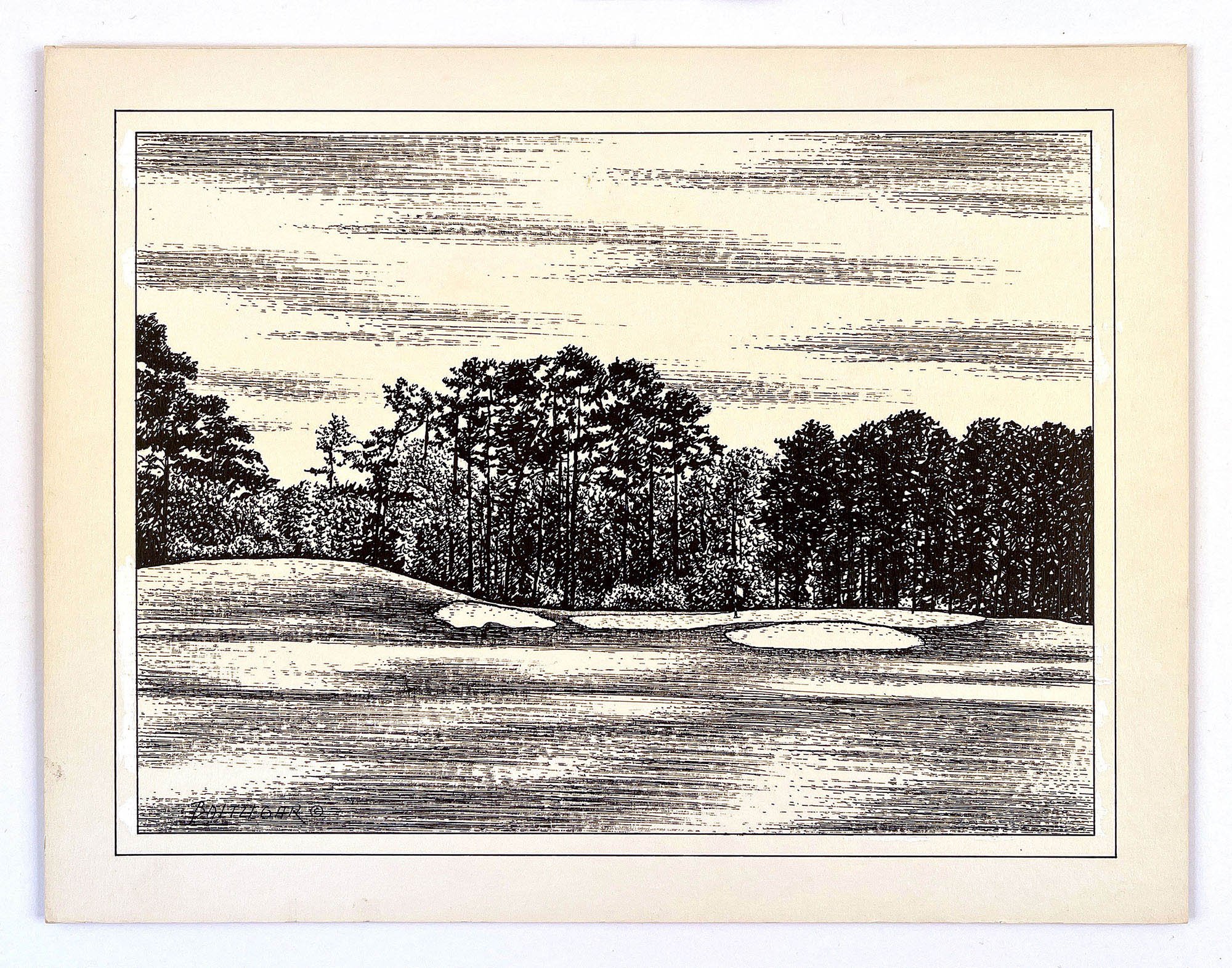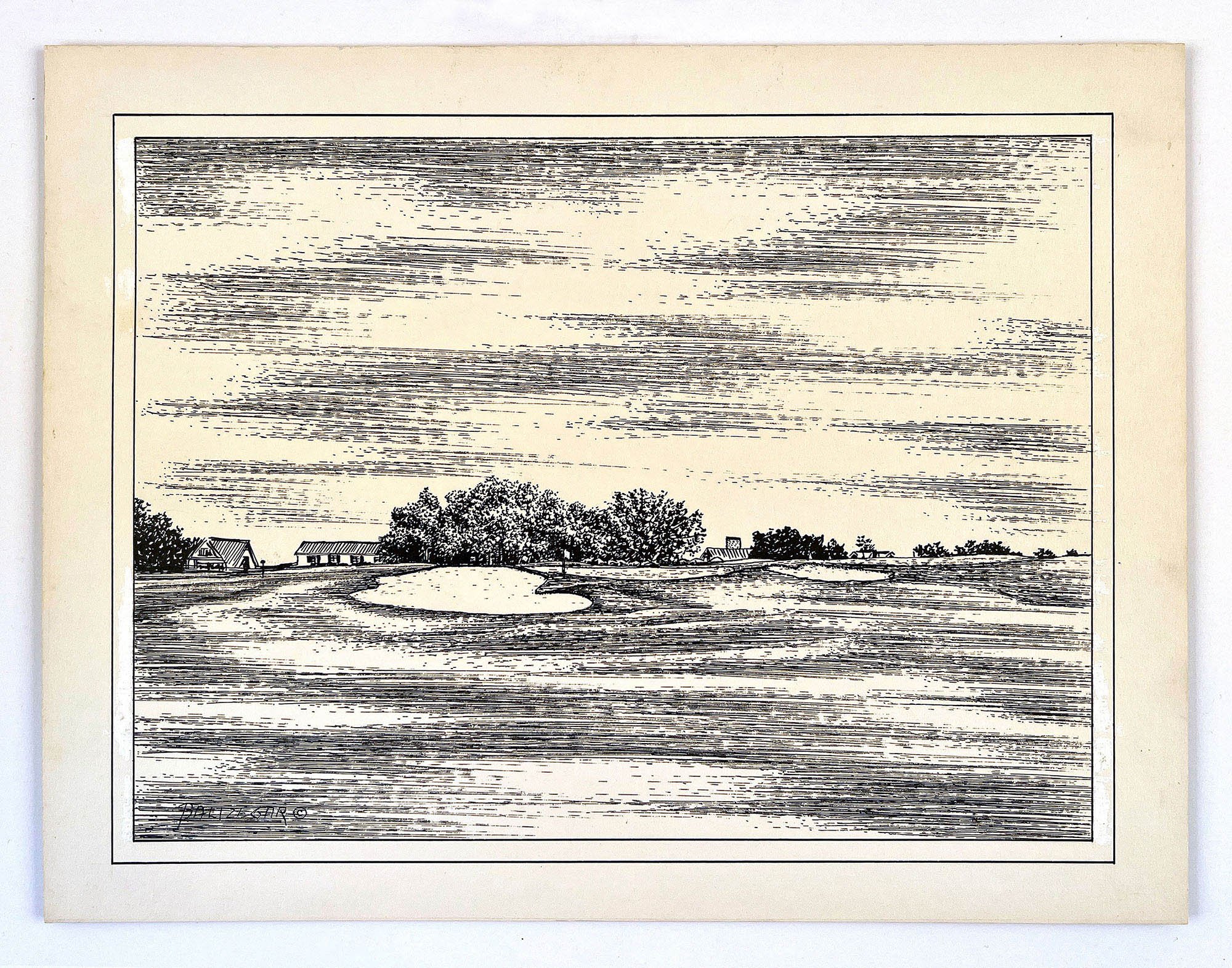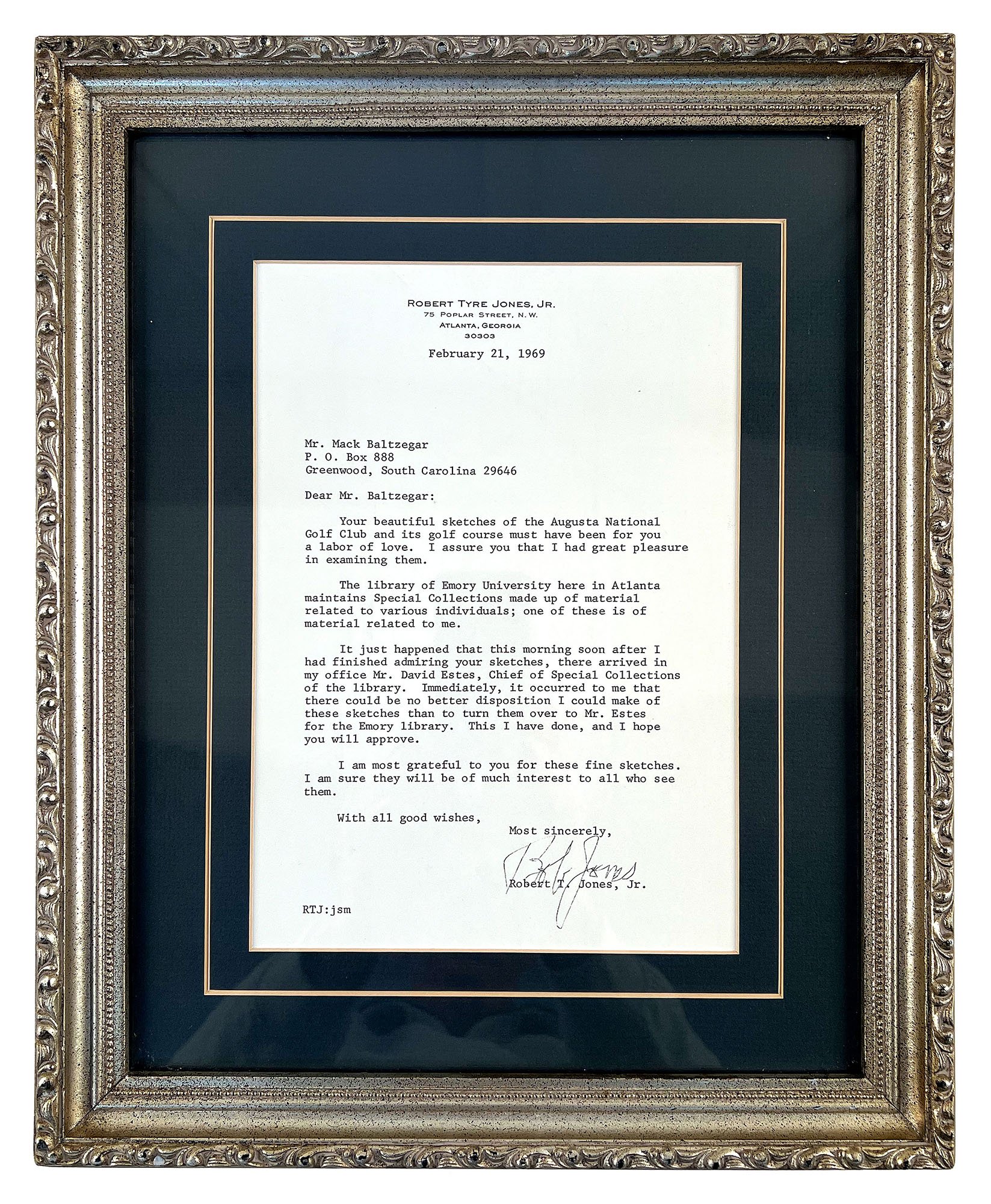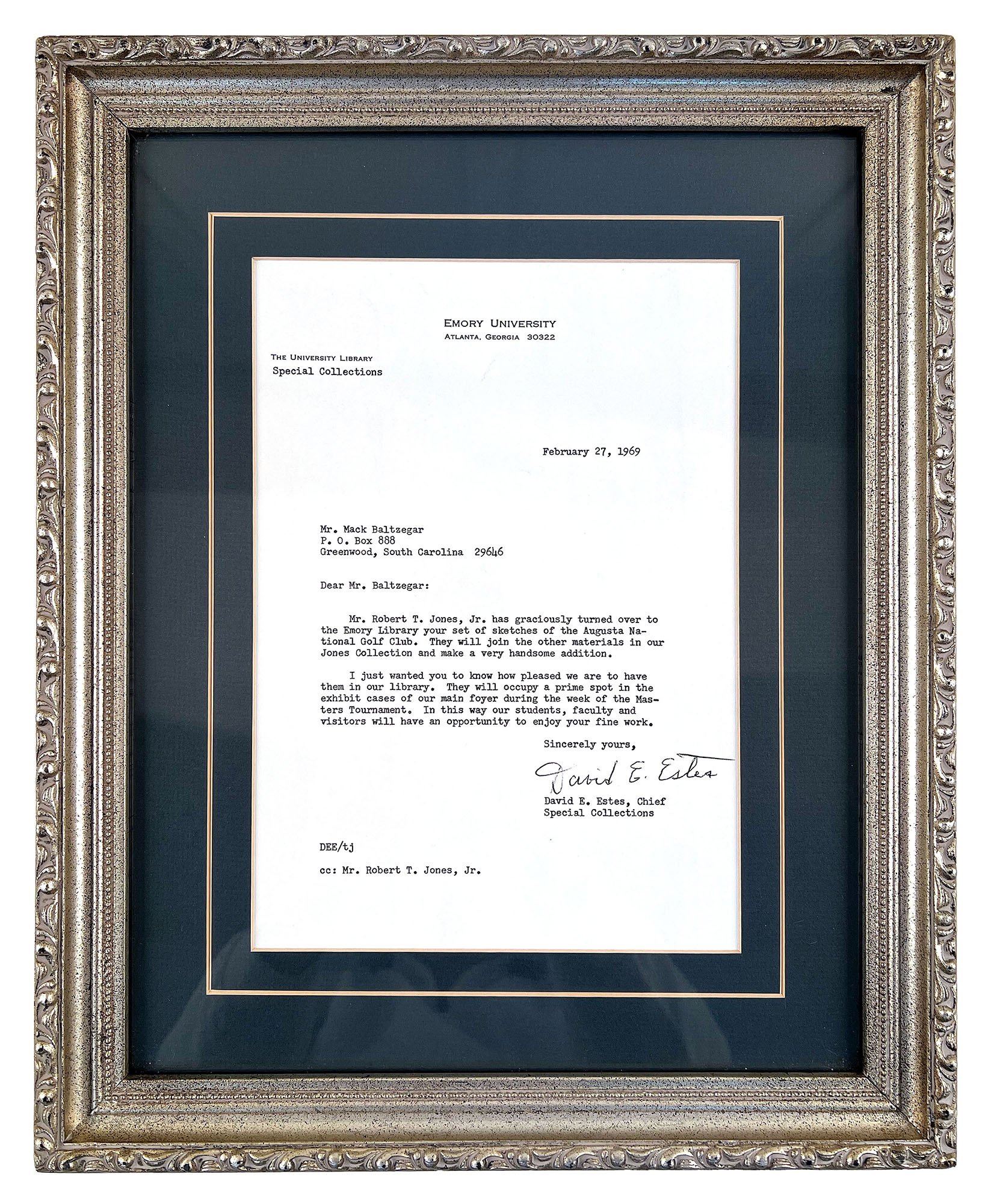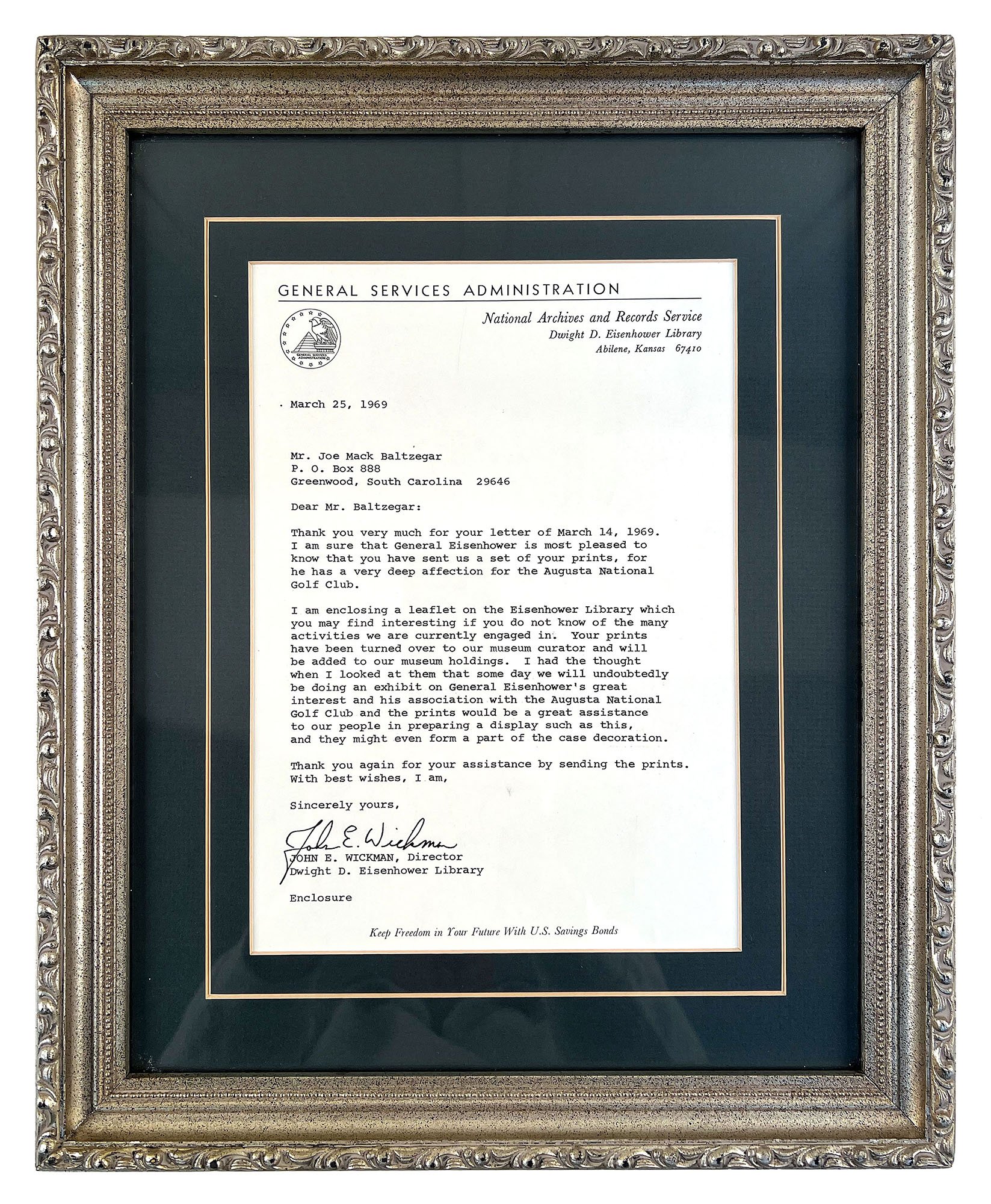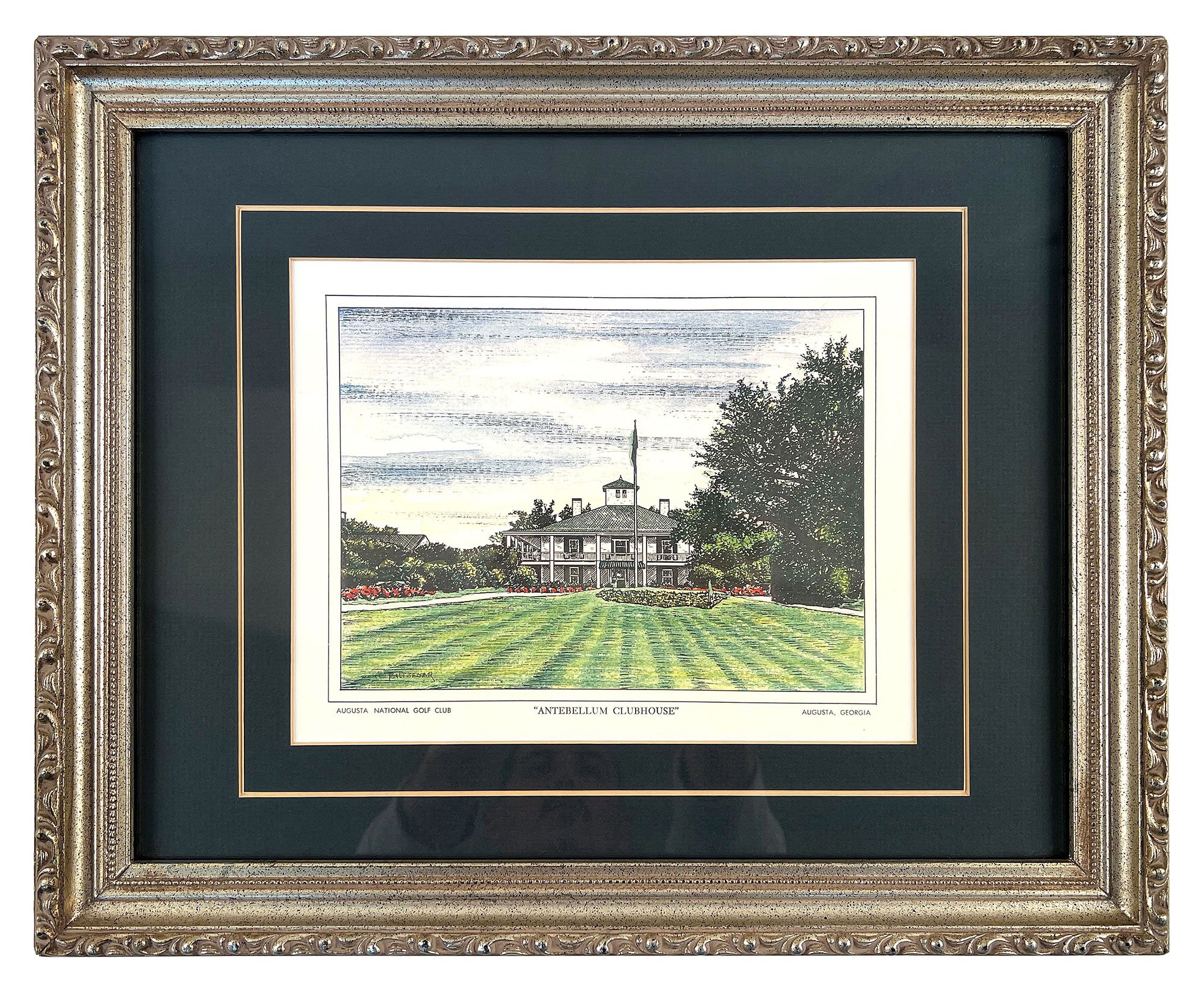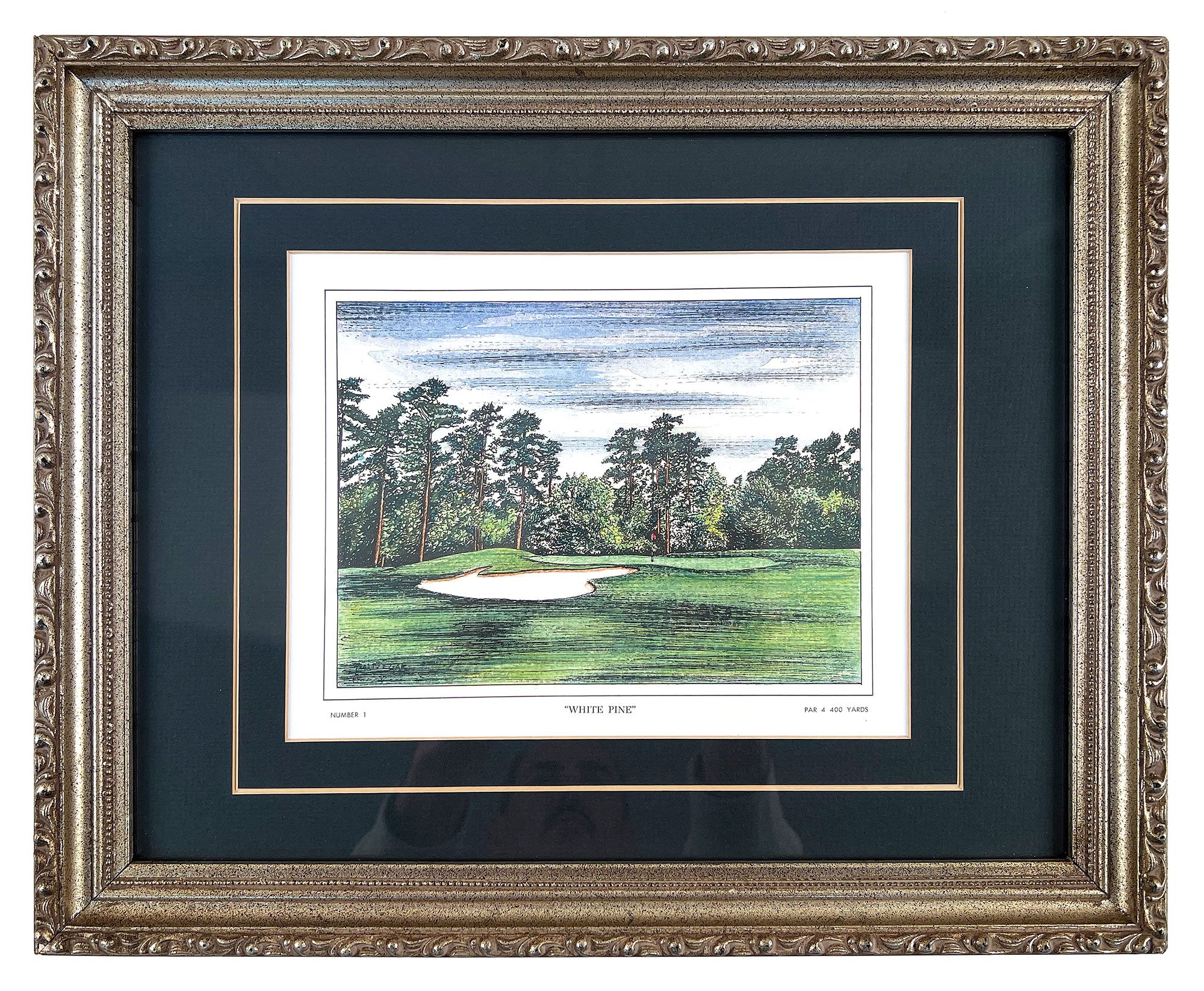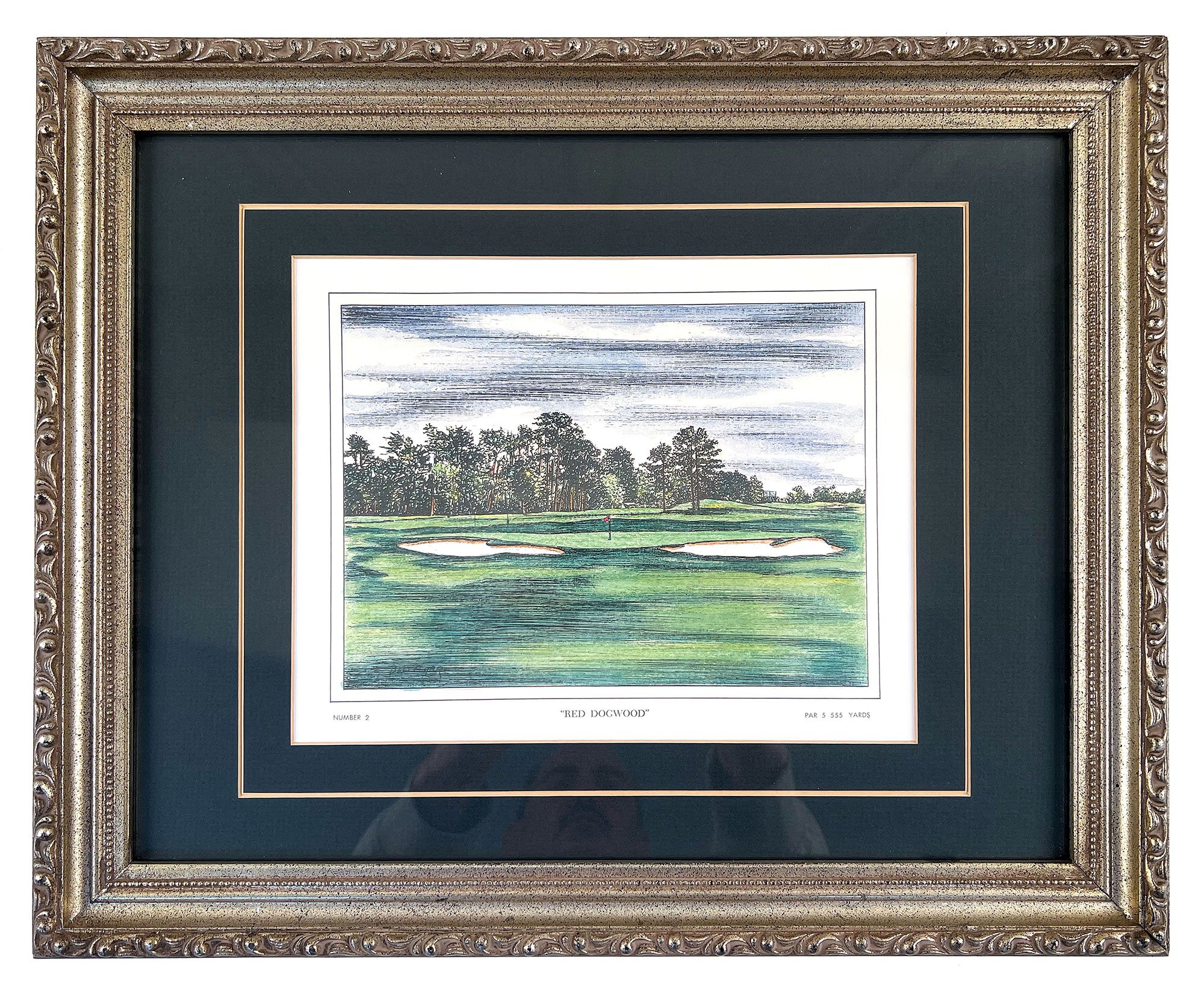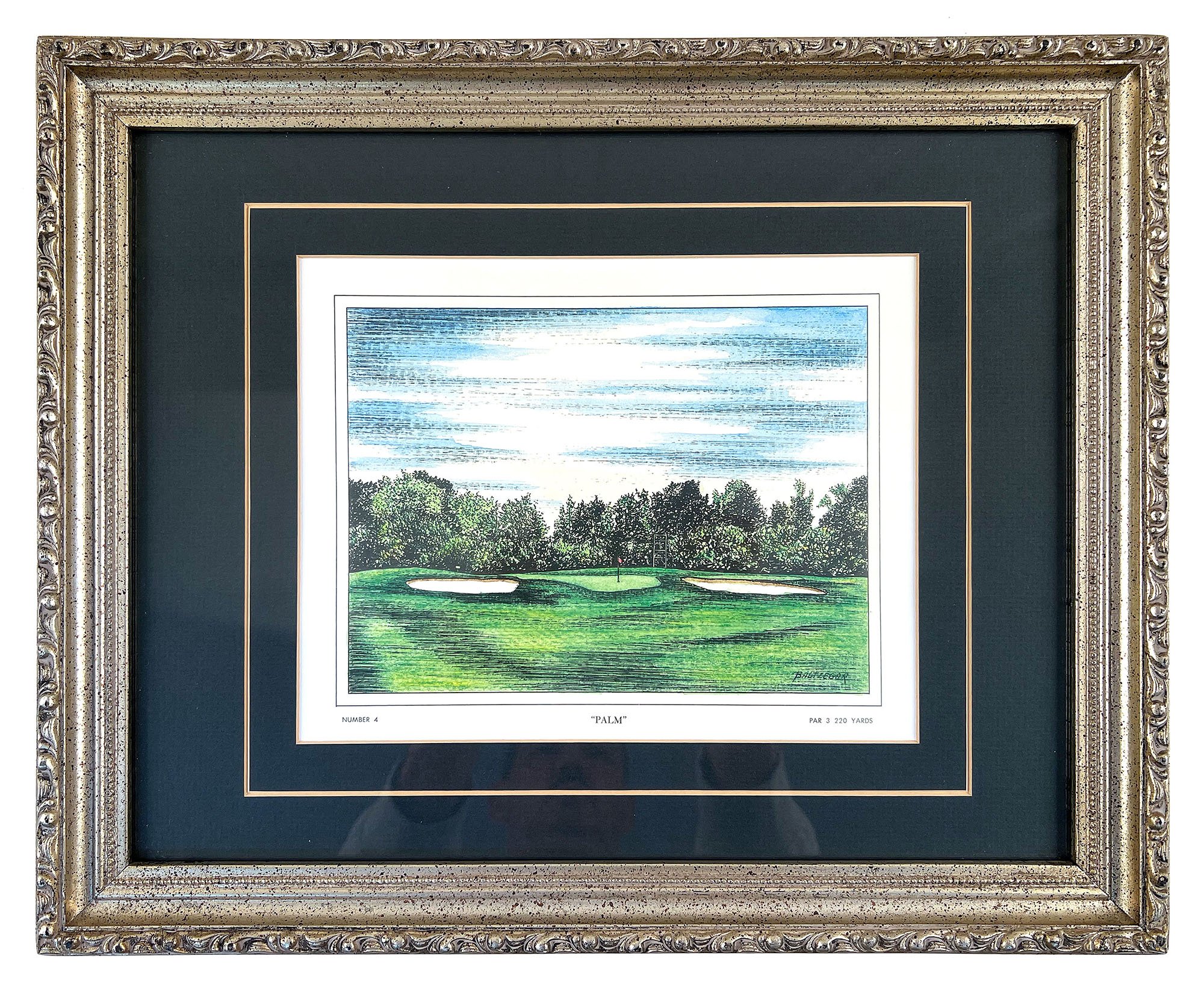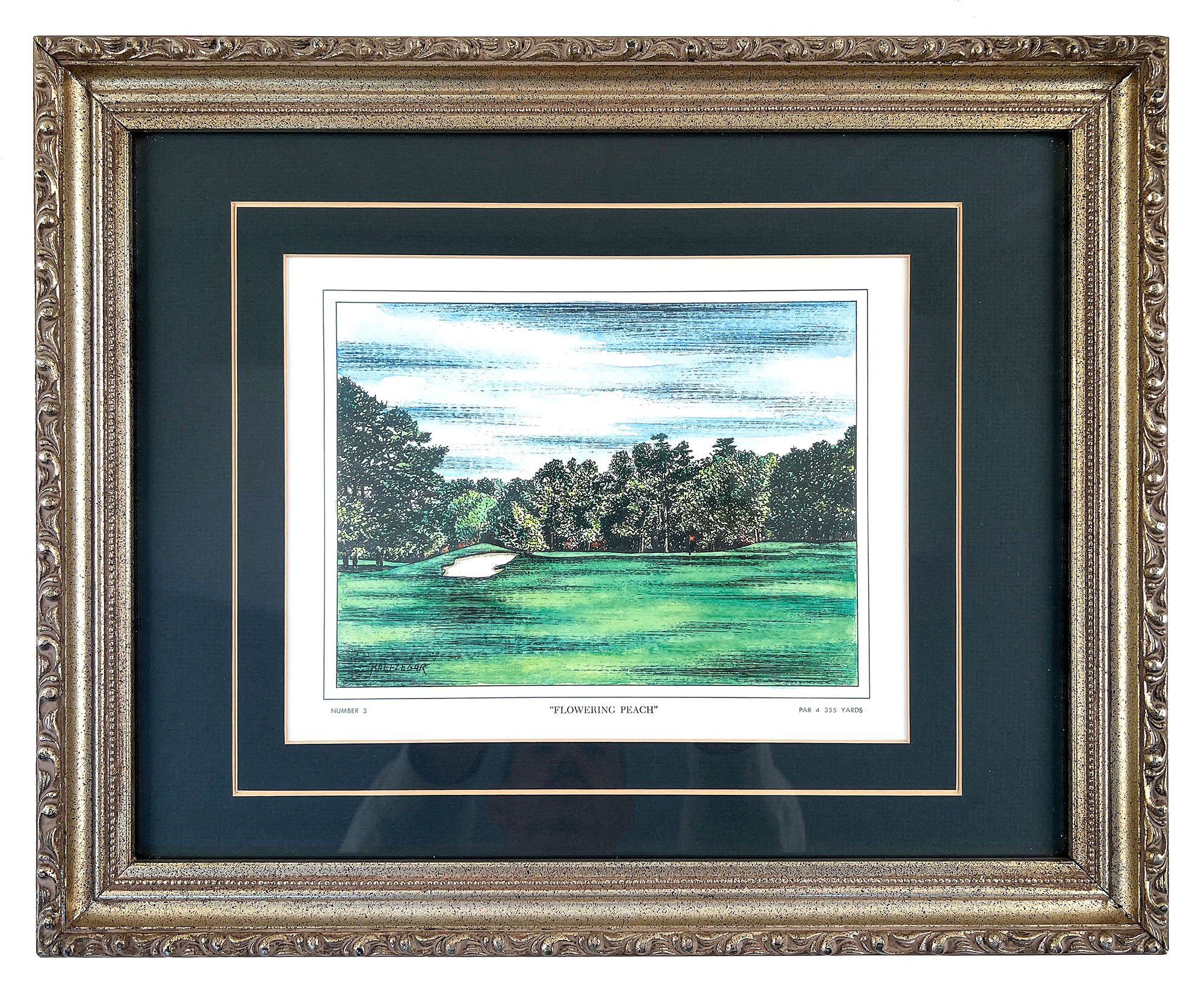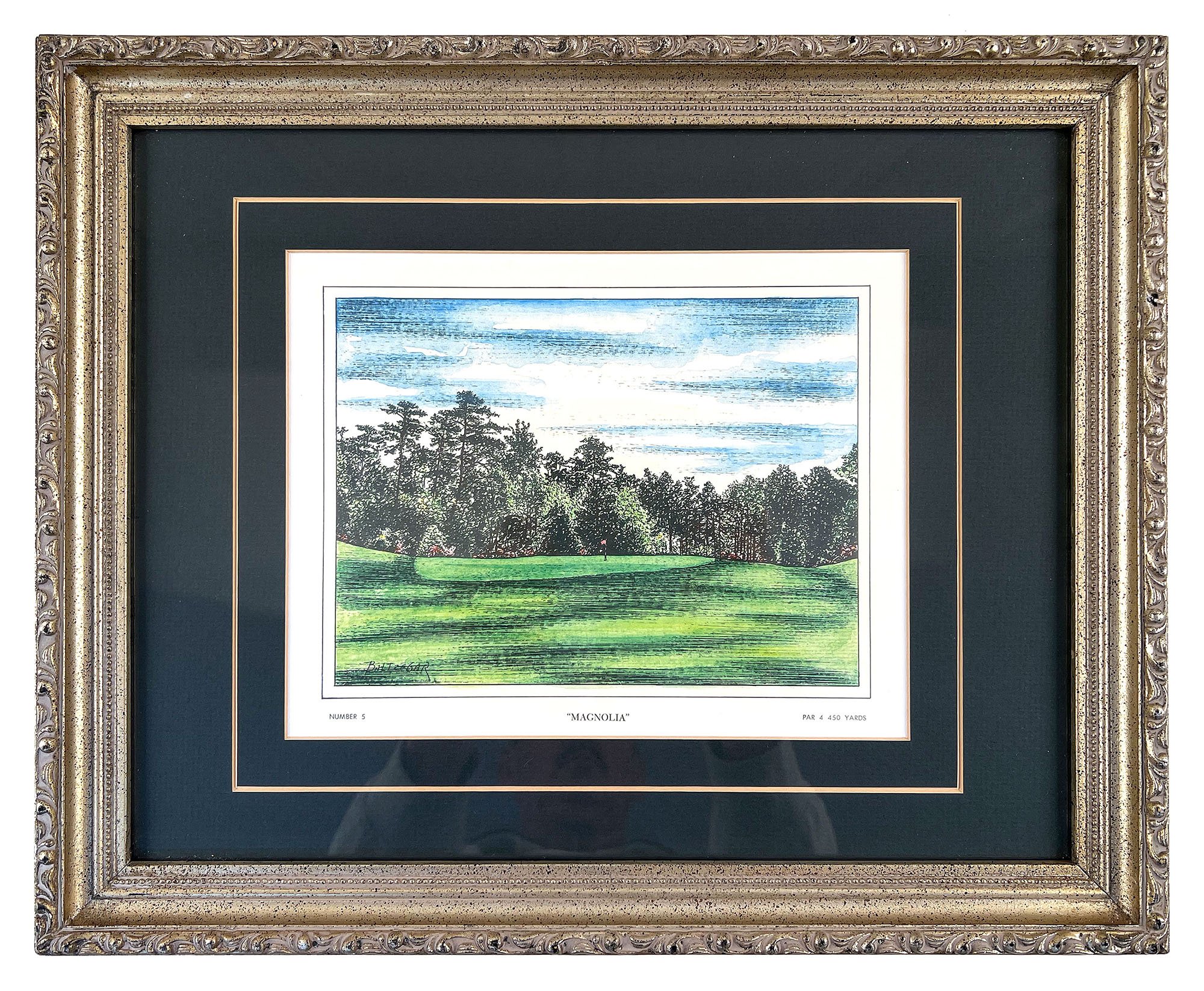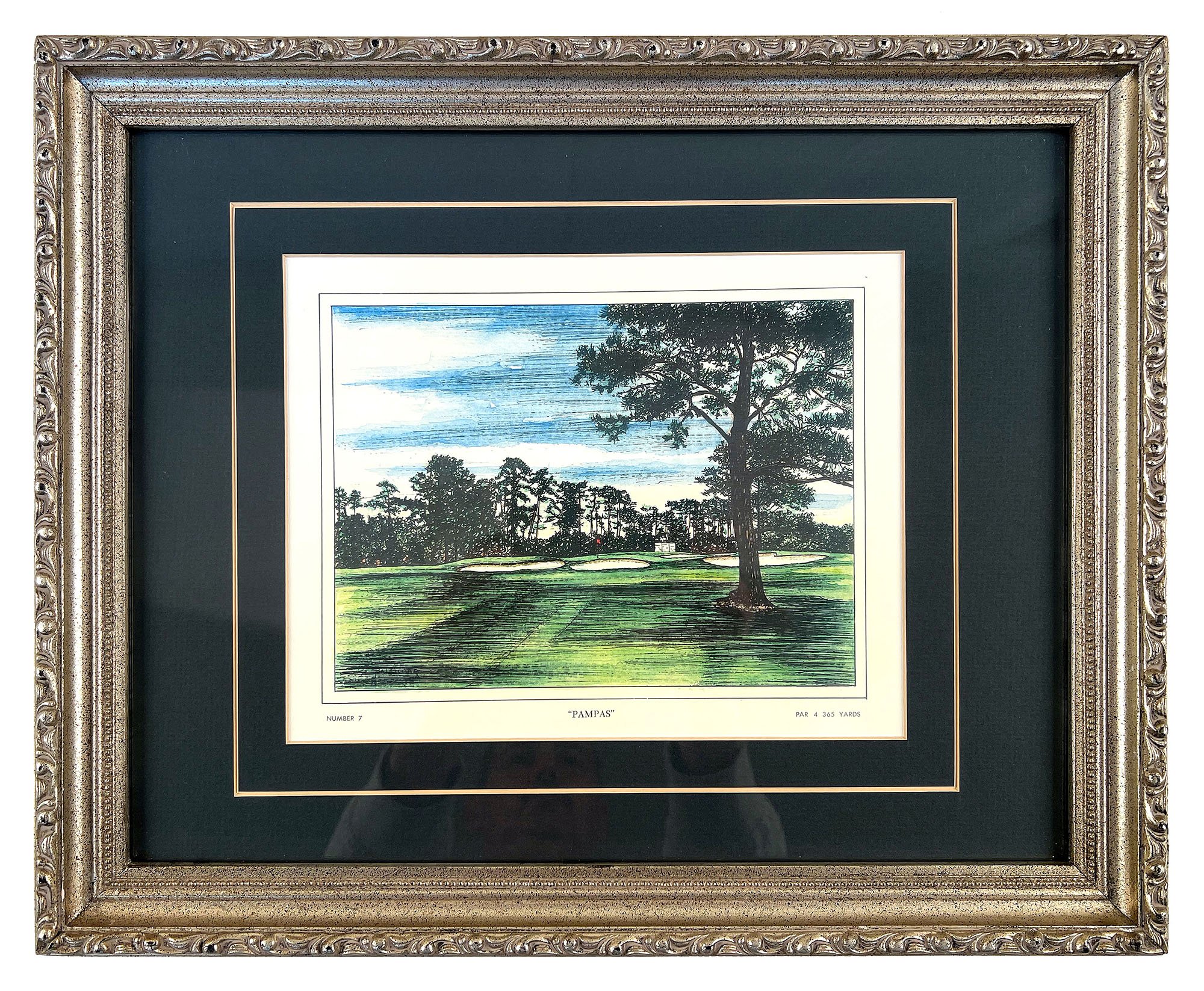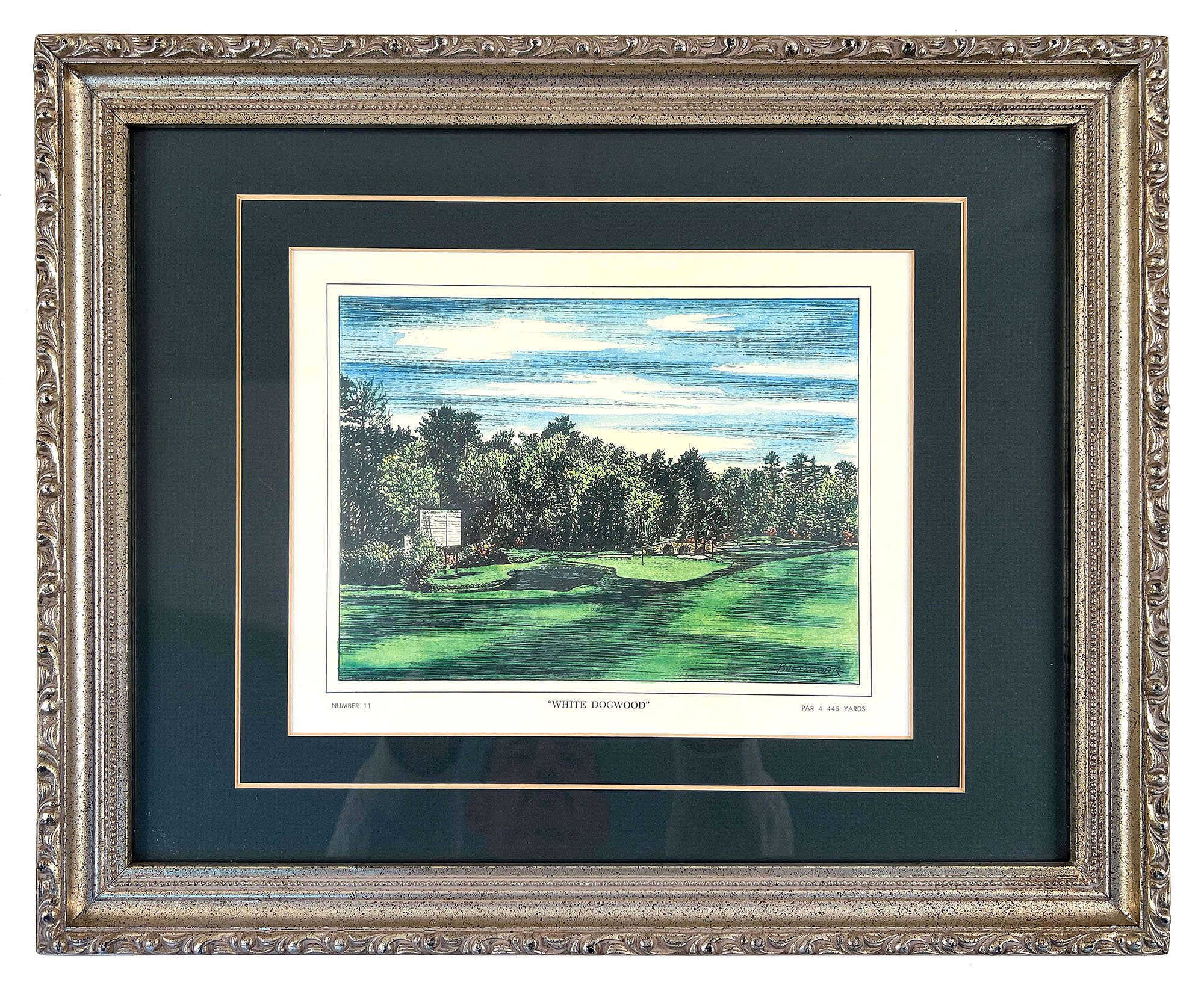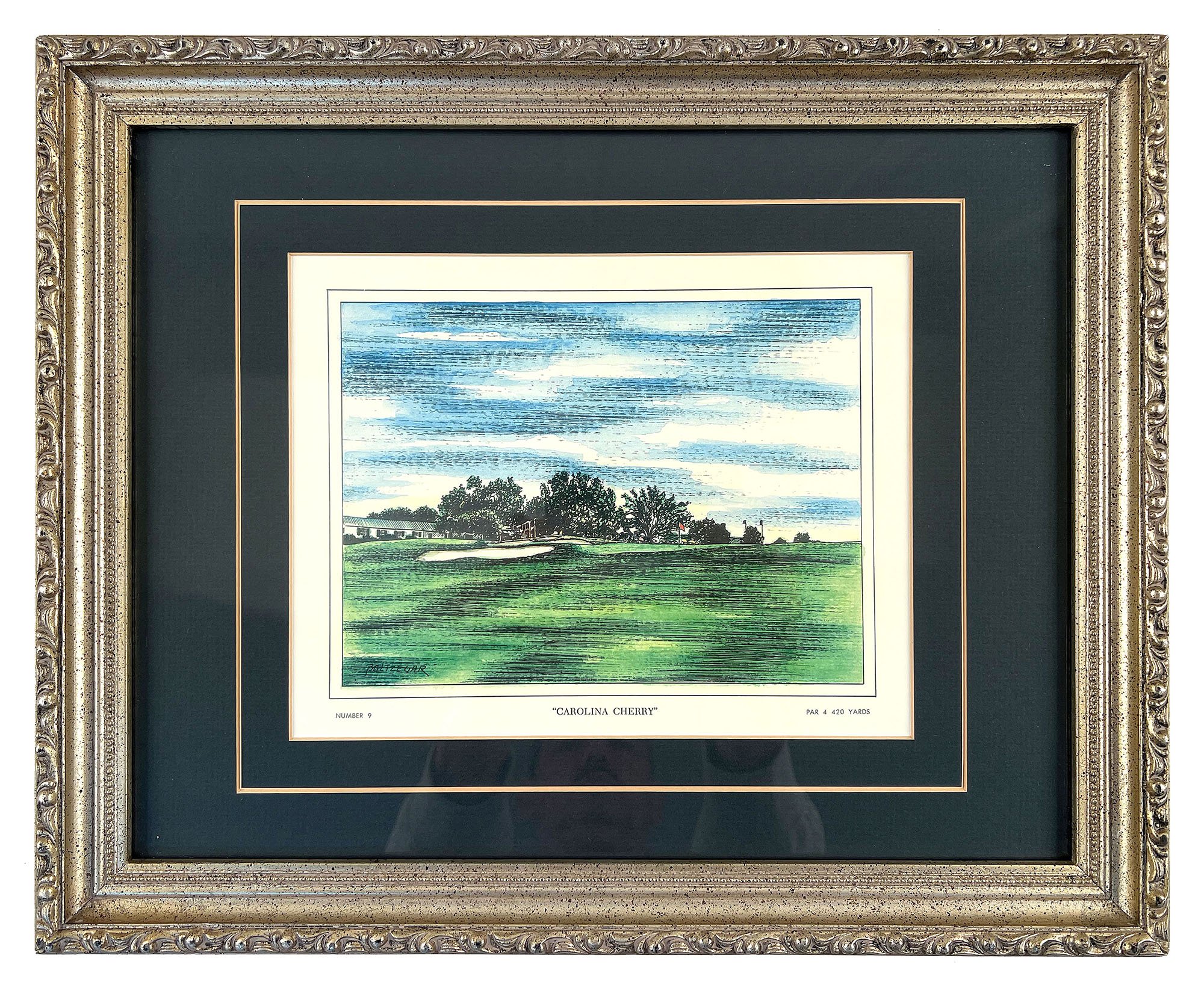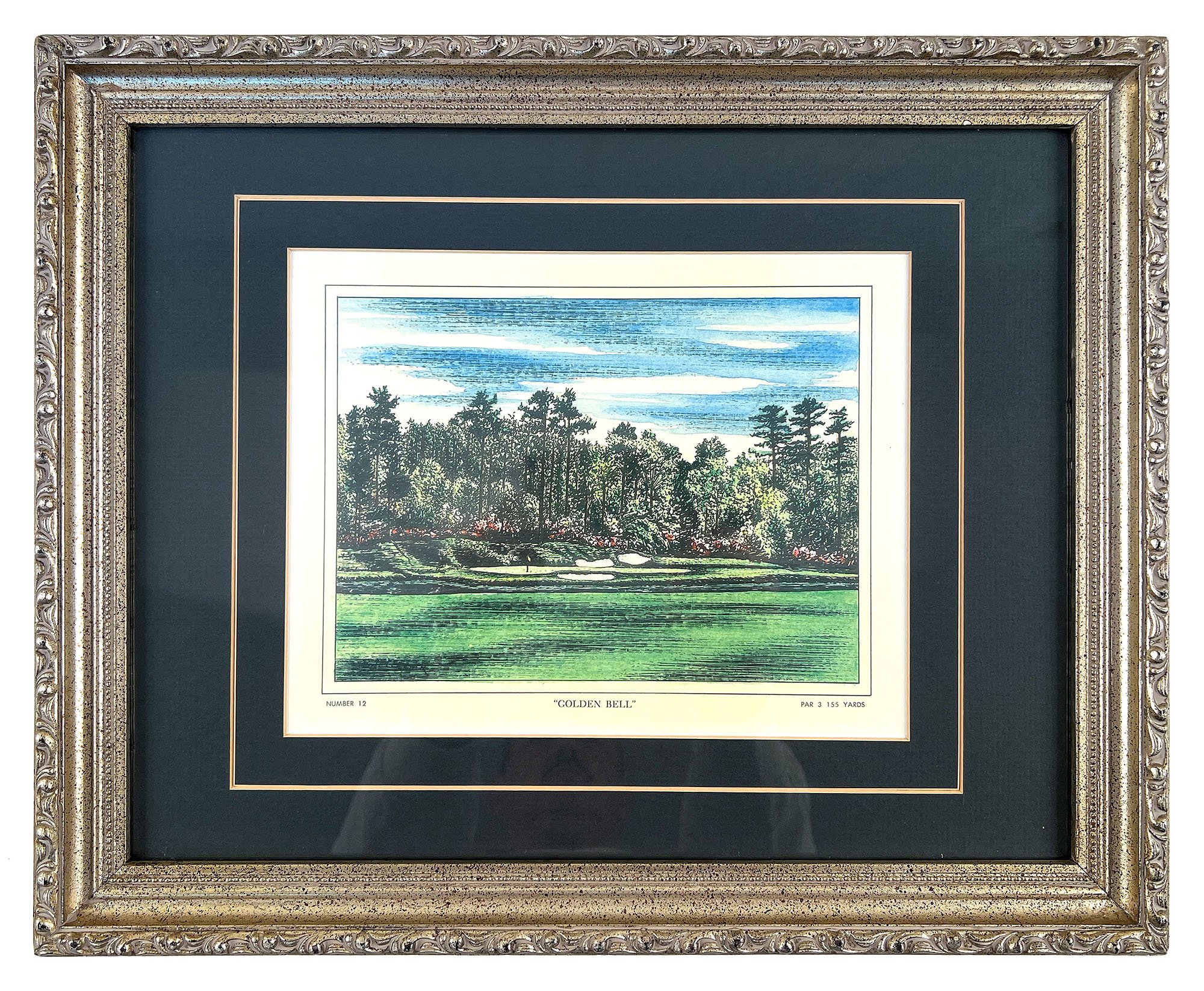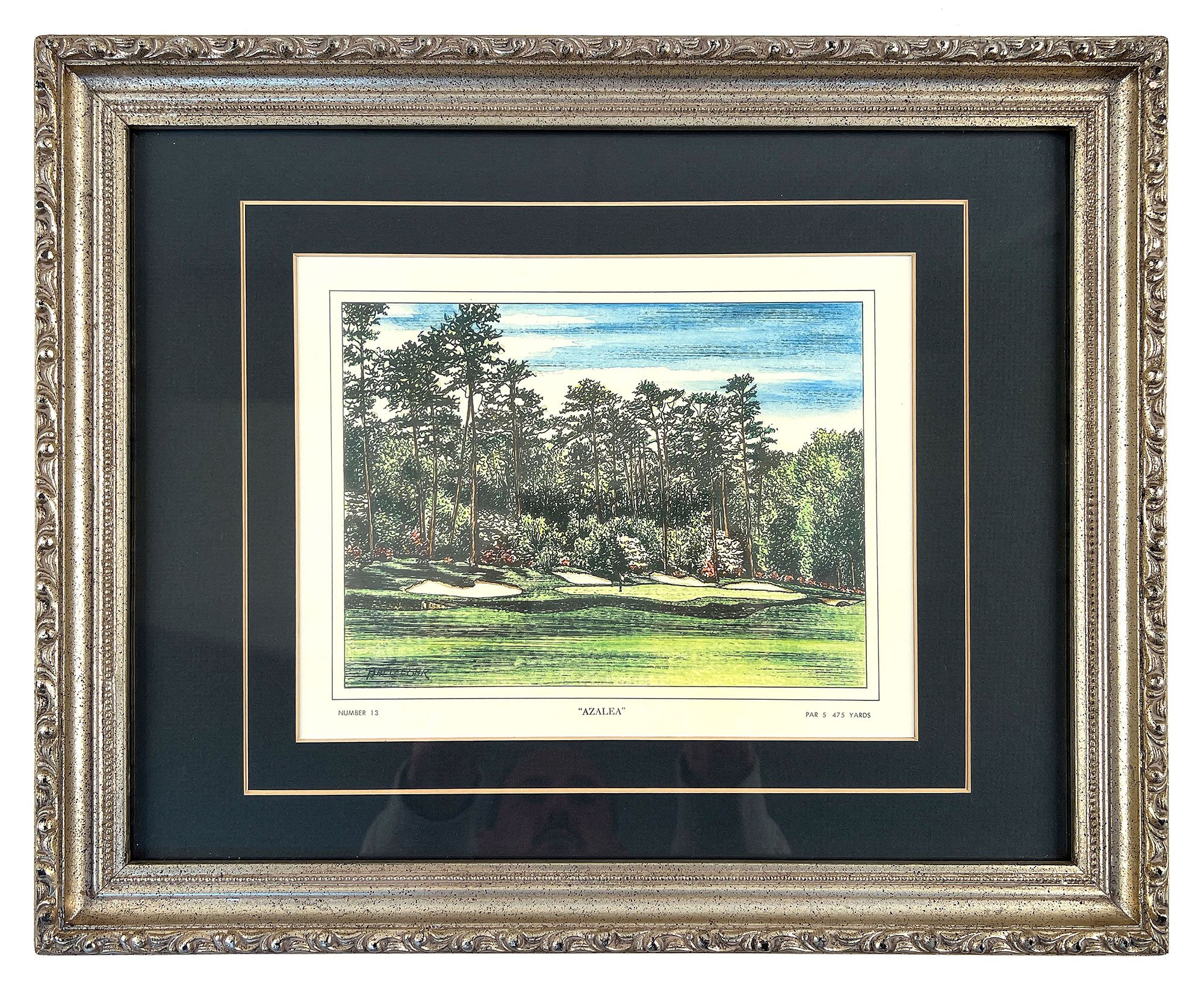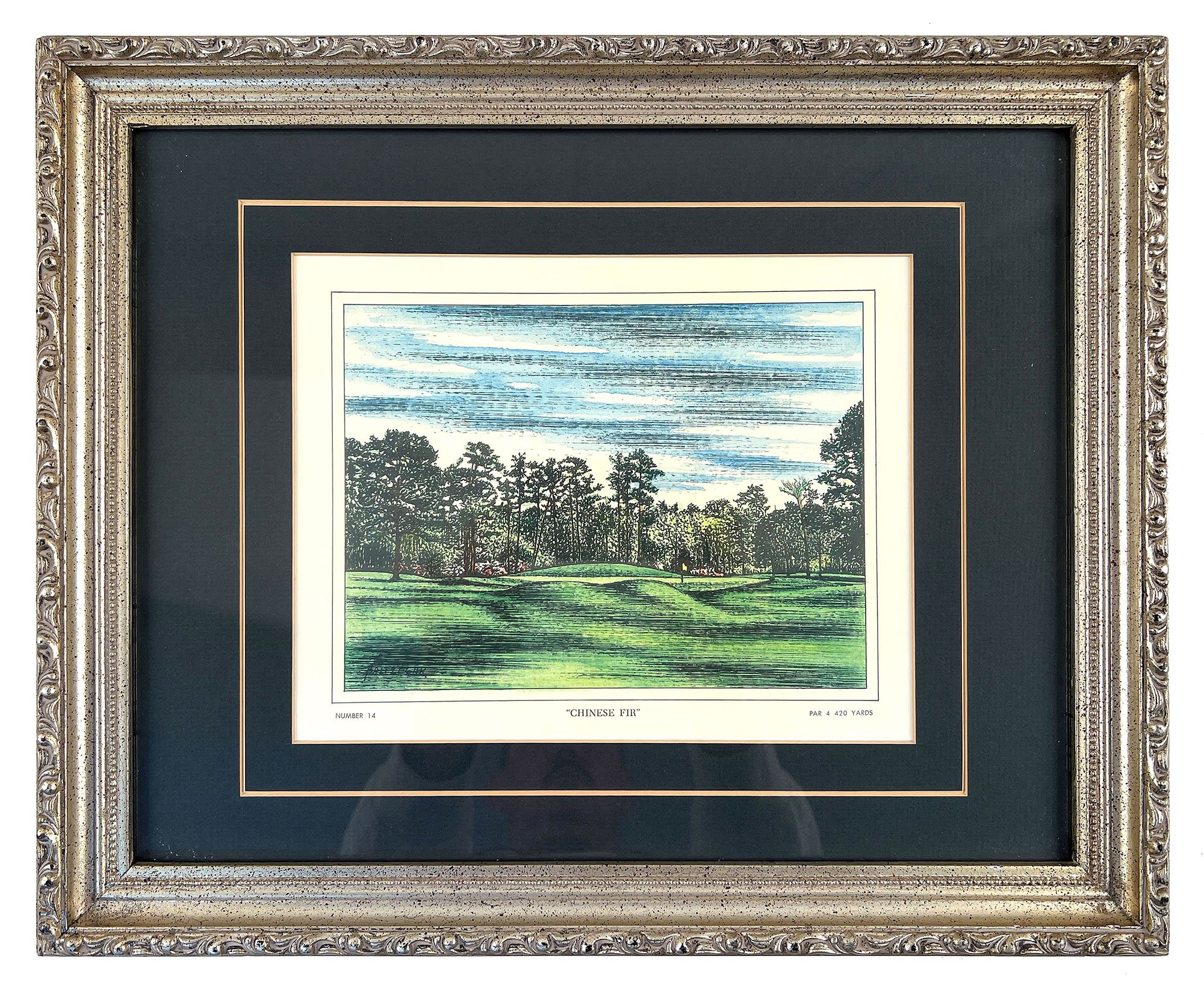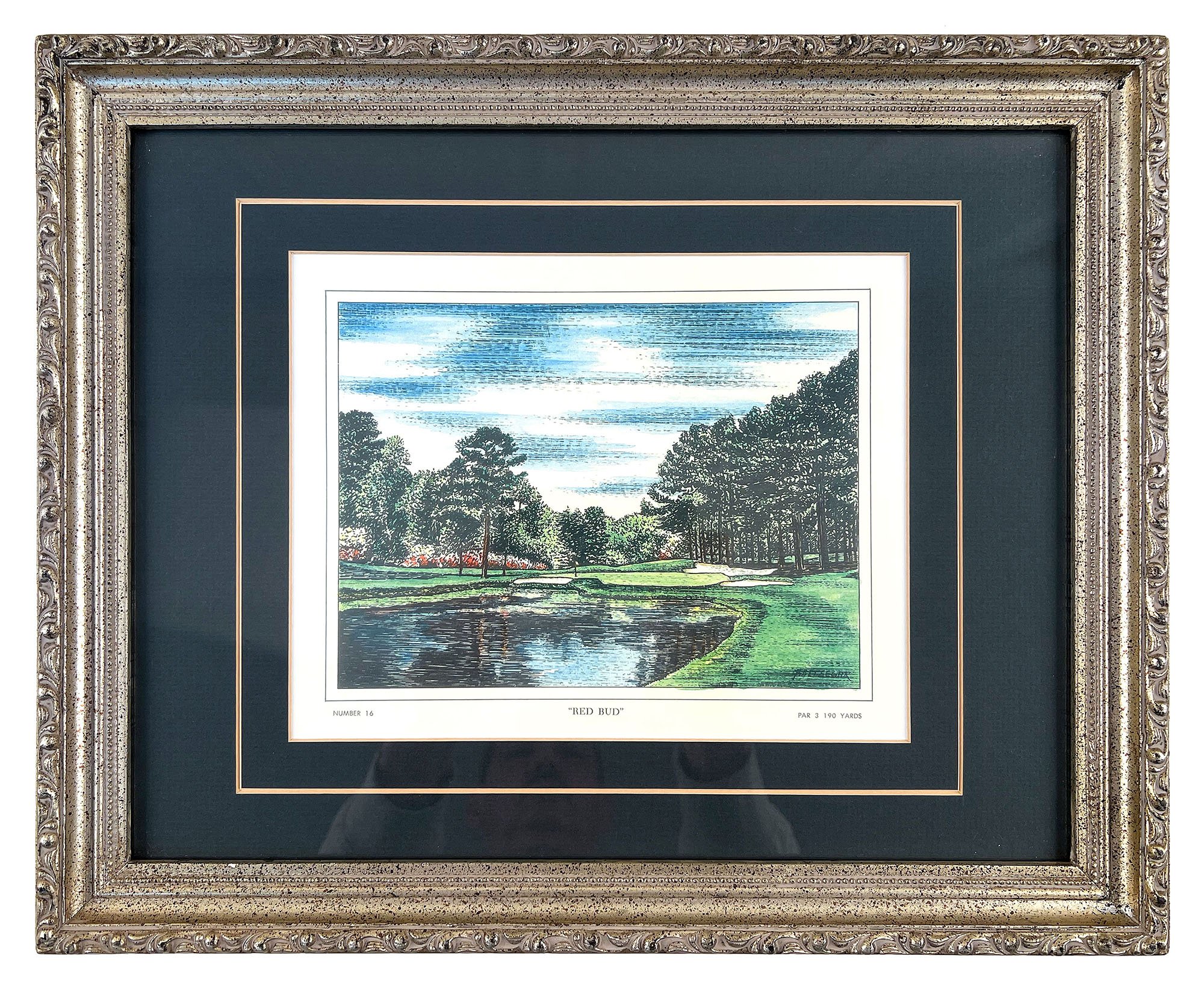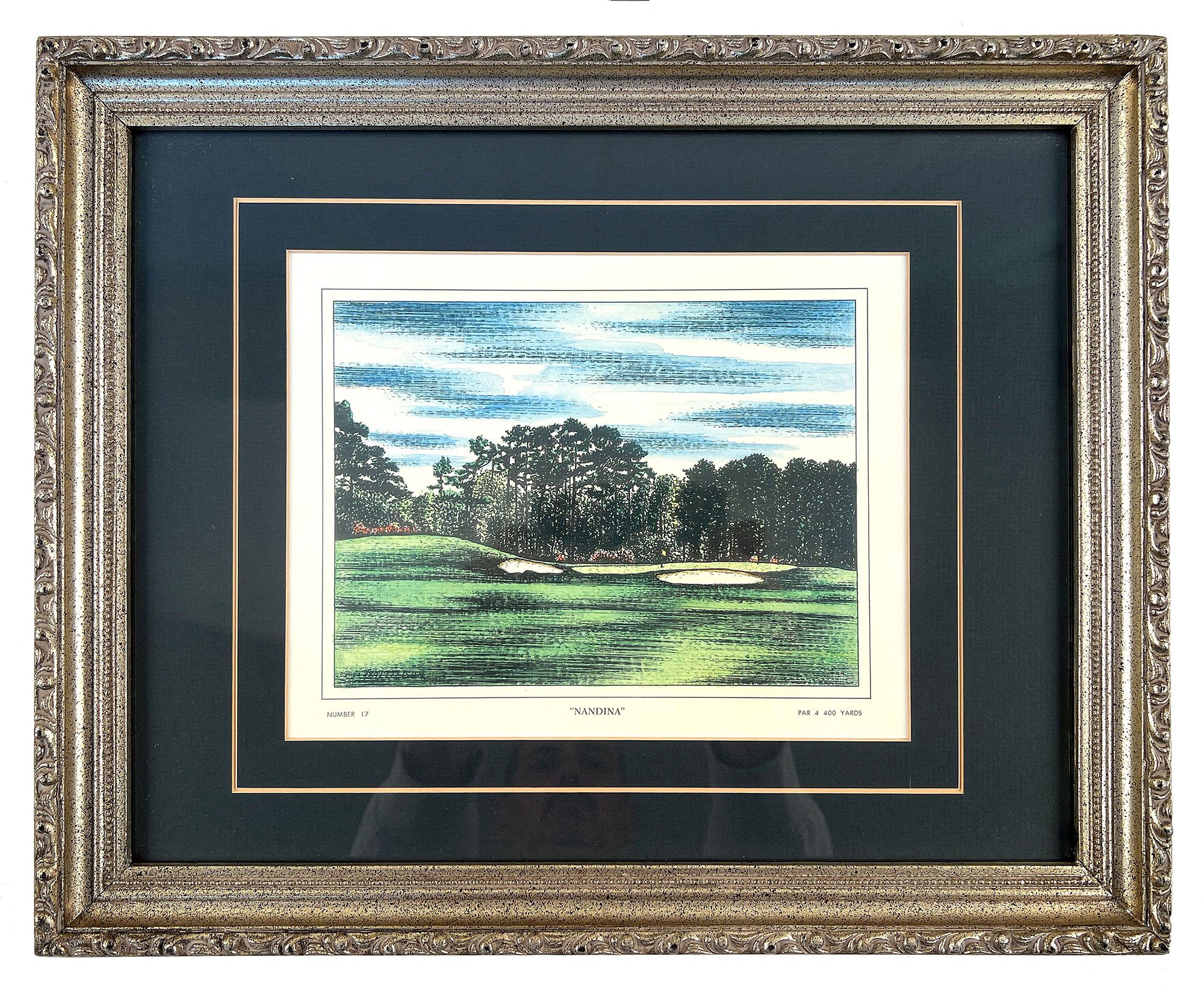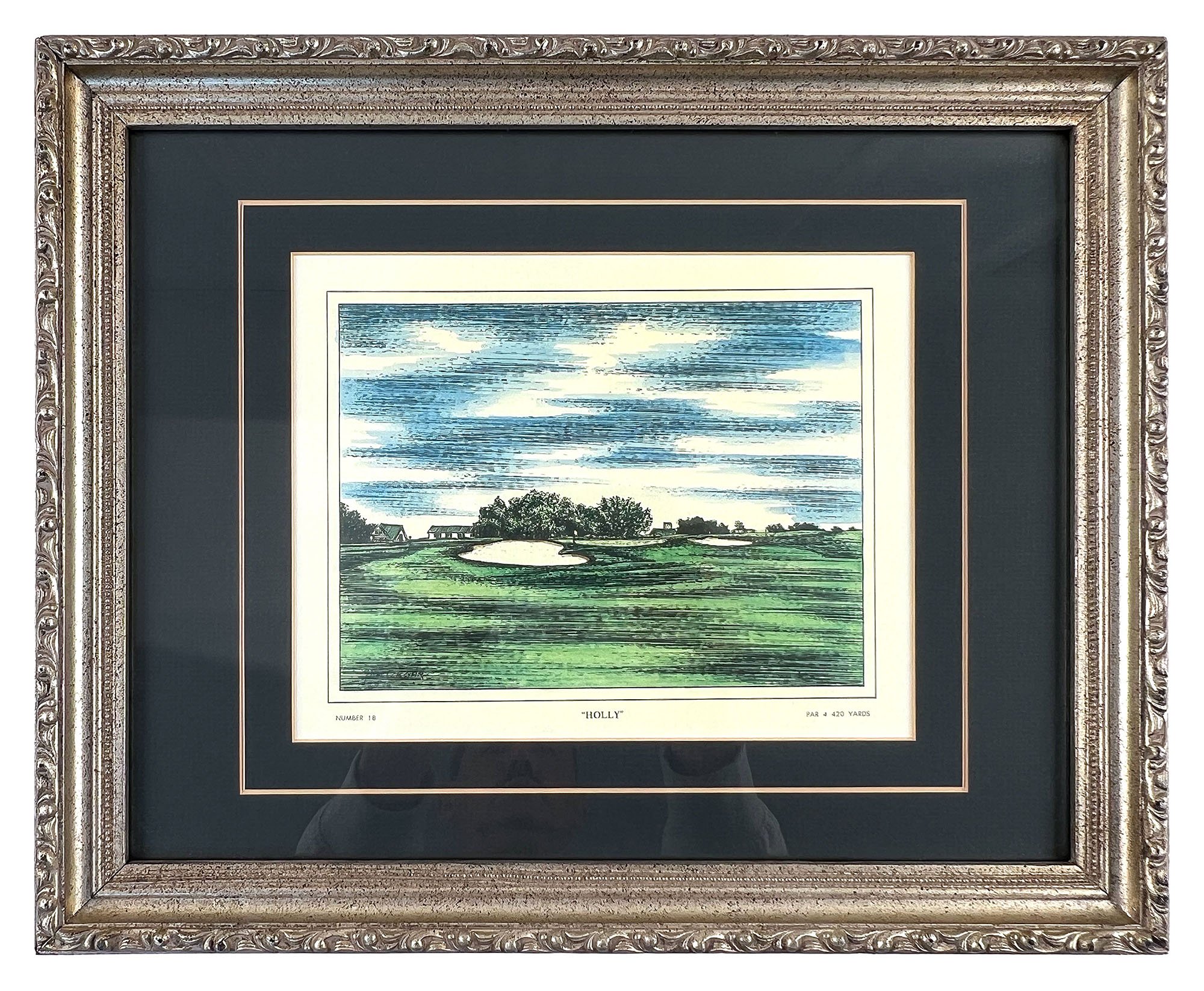A Masterful Life of Golf and Art: Mack Baltzegar
Celebrating Augusta National Golf Club, host of the Masters, is a rite of spring for generations of golf fans who flock to Georgia every April for a tradition unlike any other. It is one of the few events that lives up to the hype, thanks to a top notch patron experience and world class golf in one of America’s most manicured settings. Those fortunate enough to attend are treated to ridiculously low food prices and coveted merchandise featuring the iconic Masters logo.
For one patron in particular, the experience inspired works of art that perfectly capture Augusta’s beauty before the course was adapted to the modern game. That artist was the late Mack Baltzegar, and his sketches and watercolors featuring the Augusta National clubhouse and every hole on the course represent a time capsule of the Masters as it stood in 1968. We were inspired by his family to share these works with our audience and celebrate the life of the remarkable man behind them.
Born in Orangeburg county, South Carolina, Mack Baltzegar spent his childhood at the Connie Maxwell Children’s Home, something he called a blessing after a difficult early childhood. It was at Connie Maxwell where he discovered two of his life’s greatest joys: golf and art.
Before he created his original art of Augusta National Golf Club, Mack designed his own golf course in a cow pasture adjacent to Connie Maxwell. As a student, he would hit 100 balls a day in the field across from the campus. He told Jim Joyce, a writer for the Index-Journal in September 2008, that upon outgrowing his makeshift driving range, he went out into a nearby pasture and a vision for a 9 hole course was born. “It had two ponds and big gullies. I figured out where I could make a round of nine holes, and that’s what I did.”
A resourceful craftsman, he made hand sewn flags and flagsticks out of old pipe, mowed down whatever grass the cows hadn’t eaten, and his vision became a reality. He and his friends enjoyed the course for a year and a half before life took them in other directions. But Mack would continue to show his appreciation for Connie Maxwell, serving in various capacities to keep the property viable for other children who needed a home.
Mack furthered his education at Furman University, where he majored in art, then served two years in the Army. His time in service didn’t diminish his passions for golf and art and after the Army, he was fortunate to attend a Masters practice round in 1968 where he took pictures of all the holes and the clubhouse. These photographs served as templates for ink sketches, which he turned into watercolor paintings and in a remarkable show of confidence, sent them to Robert Trent Jones, Jr and Gen. Dwight D. Eisenhower.
So masterful was his art that he received replies from both gentlemen. Bobby Jr. sent them on Mack’s behalf to Emory University’s art collection, which had a special collection of items related to him, where they would be displayed during future Masters exhibitions for the enjoyment of the public. Gen. Eisenhower’s executive assistant showed the prints to Eisenhower and the watercolors made their way to the General Services Administration for inclusion in exhibitions of Eisenhower’s deep love for Augusta, where a tree on Hole 17, Nandina, was named for him after his request to have it cut down. (That request was denied by Augusta National, but not by mother nature, who brought it down during a 2014 ice storm).
These sketches, photographs, and watercolor paintings of Augusta National Golf Club provide a unique view of the Masters holes and a beautiful time capsule of the original course design. Many fans of the Masters know that each hole at Augusta National is named after a featured plant, but may not know the names have changed over time. Today we know Hole 1 as Tea Olive, but when Mack created his art it was called White Pine. The same goes for Hole 2 (from Red Dogwood to Pink Dogwood) and Hole 4 (from Palm to Flowering Crab Apple after a winter storm killed the Palms adorning the left side of the fairway). Even the first hole of Amen Corner, White Dogwood, used to be known only as Dogwood. But most of the holes have kept the same name since the course first opened.
Mack’s artistic explorations extended beyond Augusta. He was a successful commercial artist and prolific painter, with works featuring St. Andrews and Connie Maxwell Children’s home in his portfolio. Through a collaboration with his family, we are proud to make prints of Mack’s Augusta golf artwork available for sale. Even those not interested in purchase will appreciate the watercolors, sketches and correspondence from Mack’s life, featured in the gallery below.
